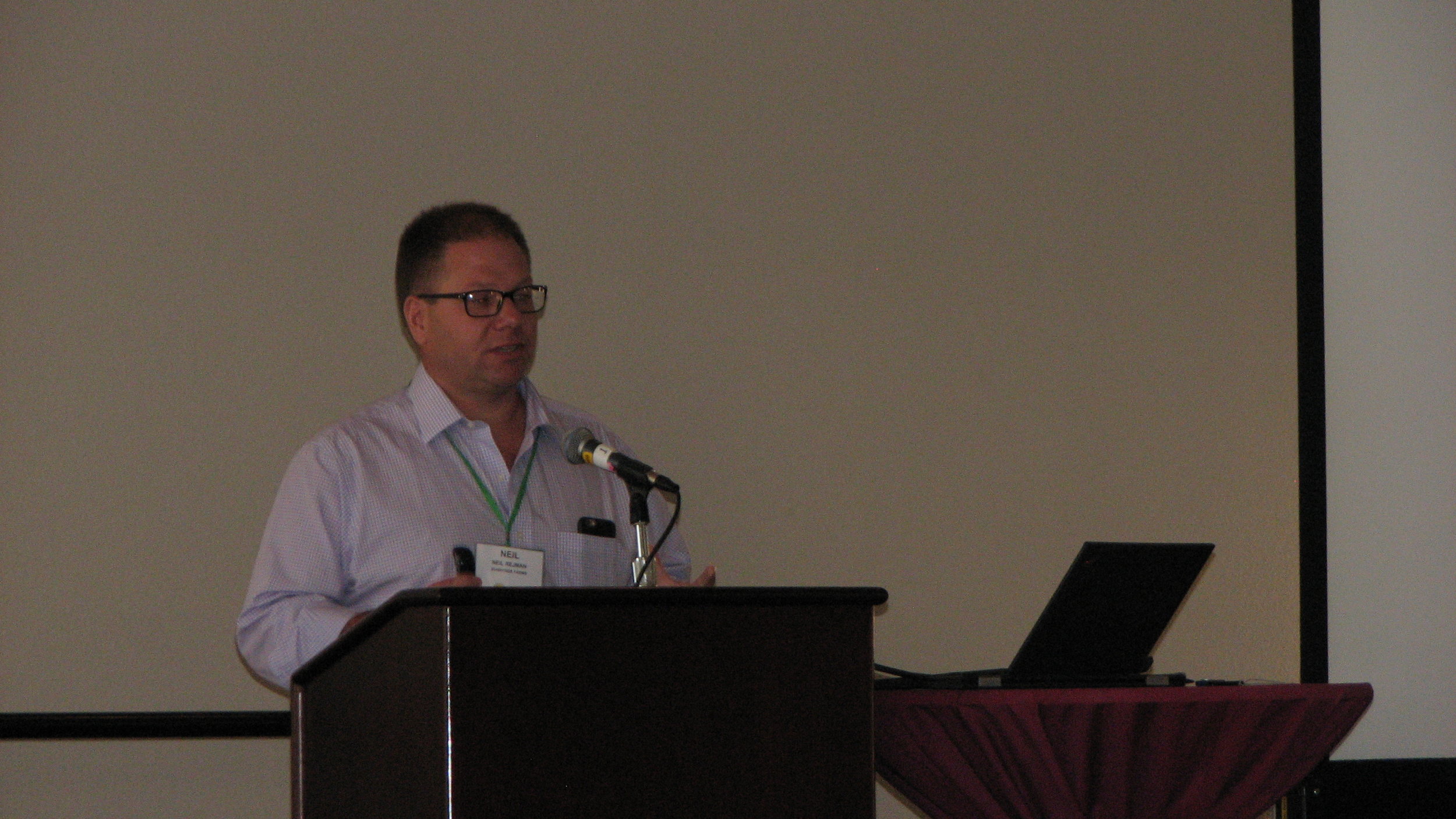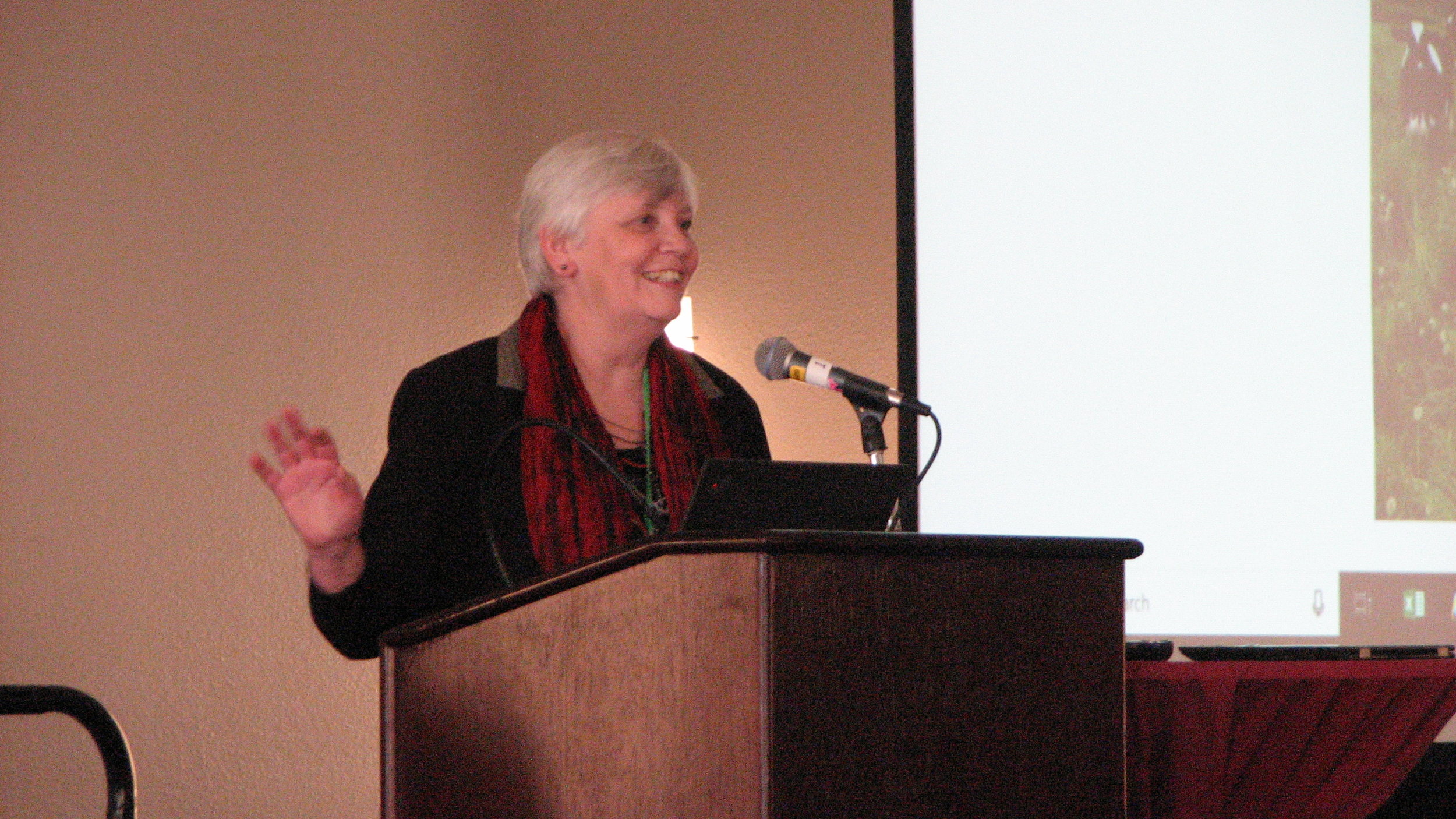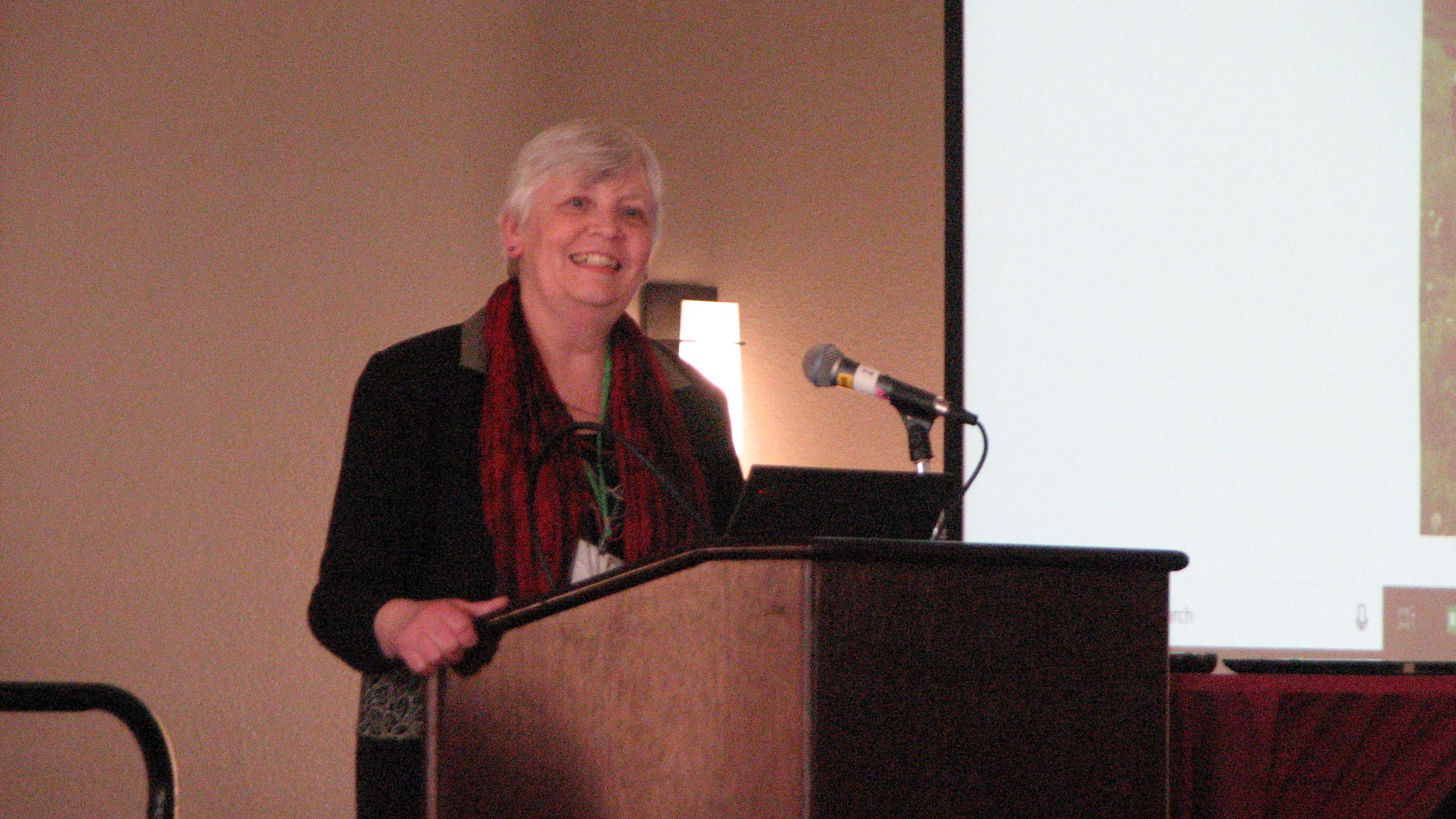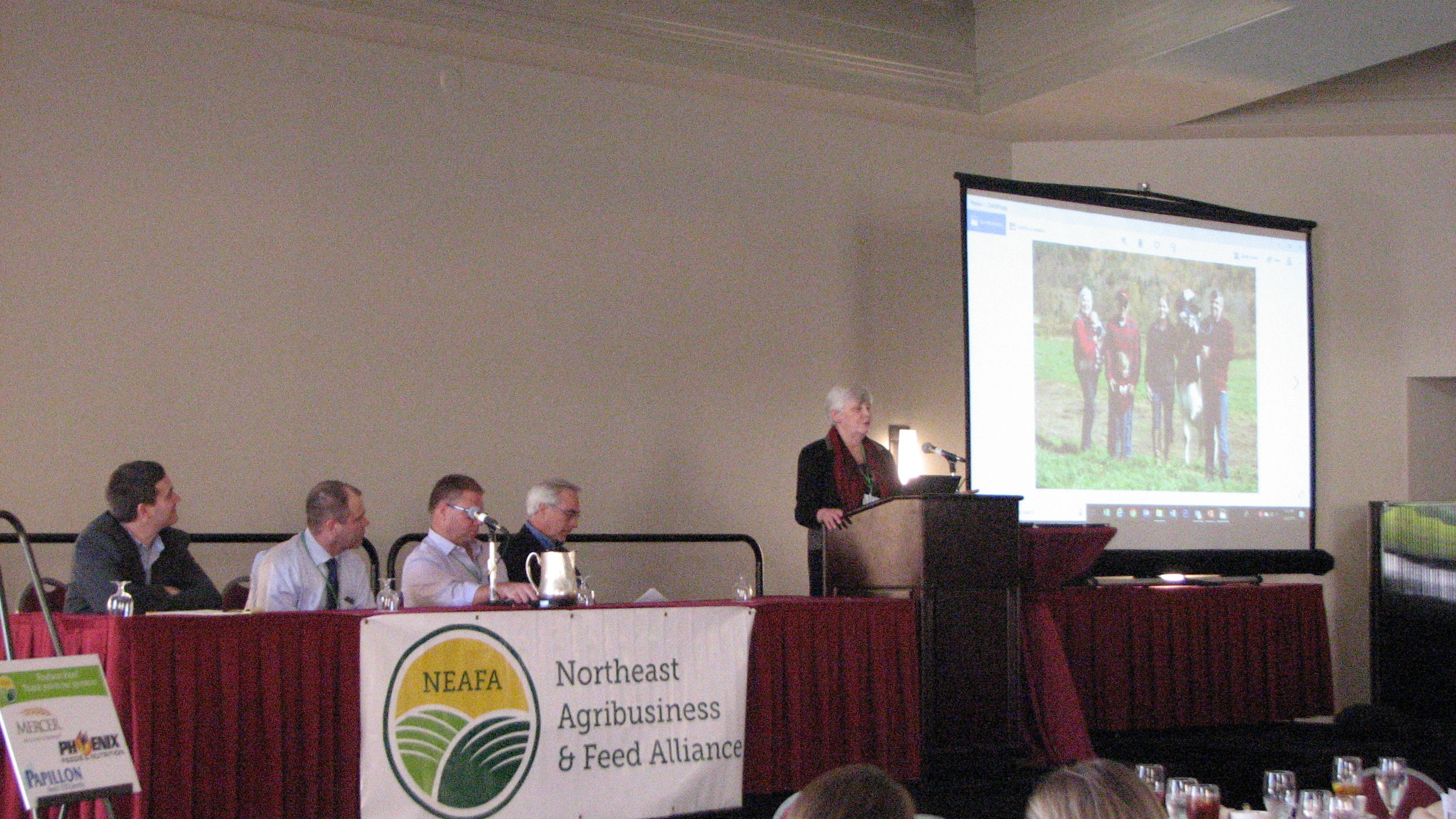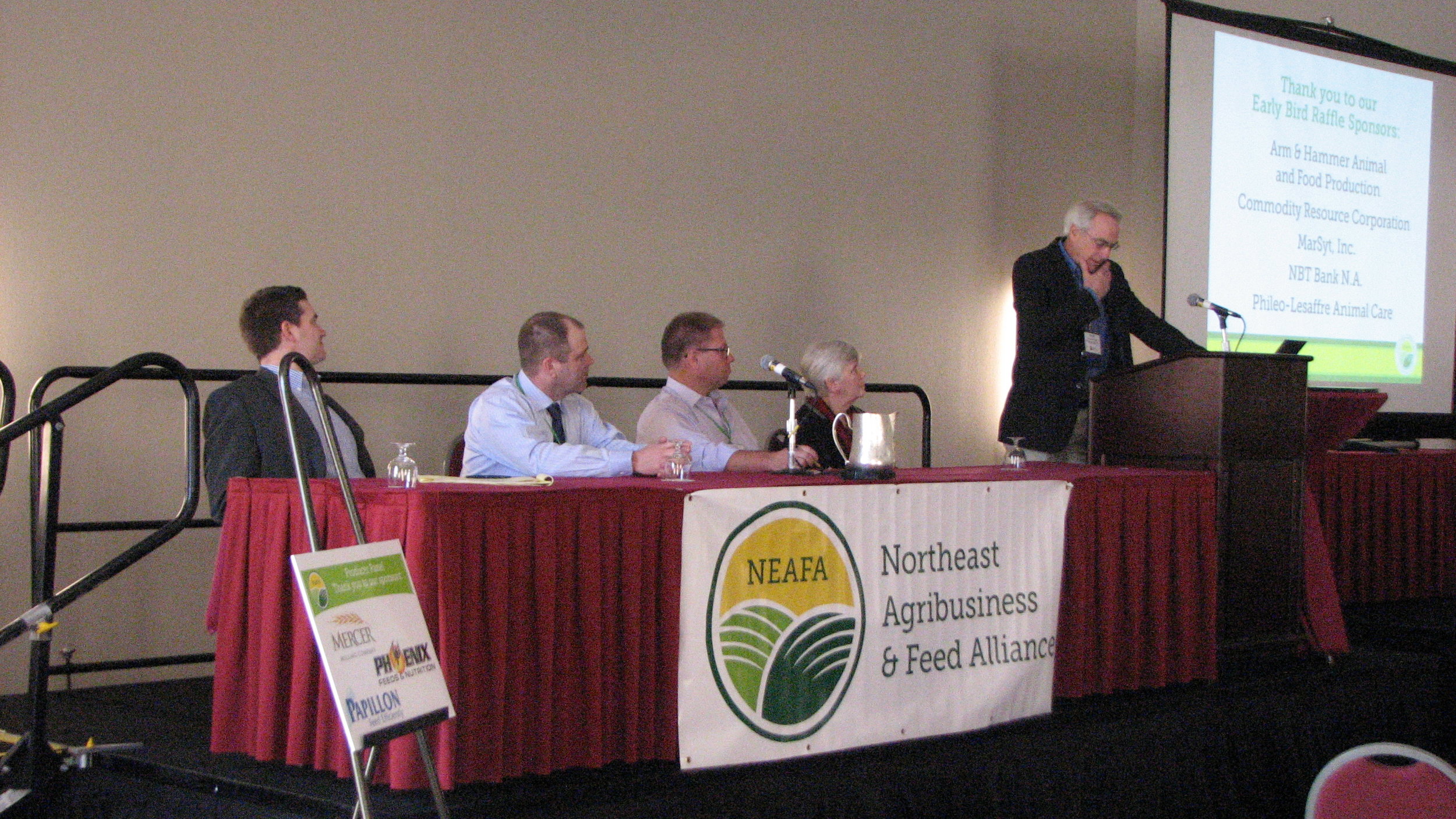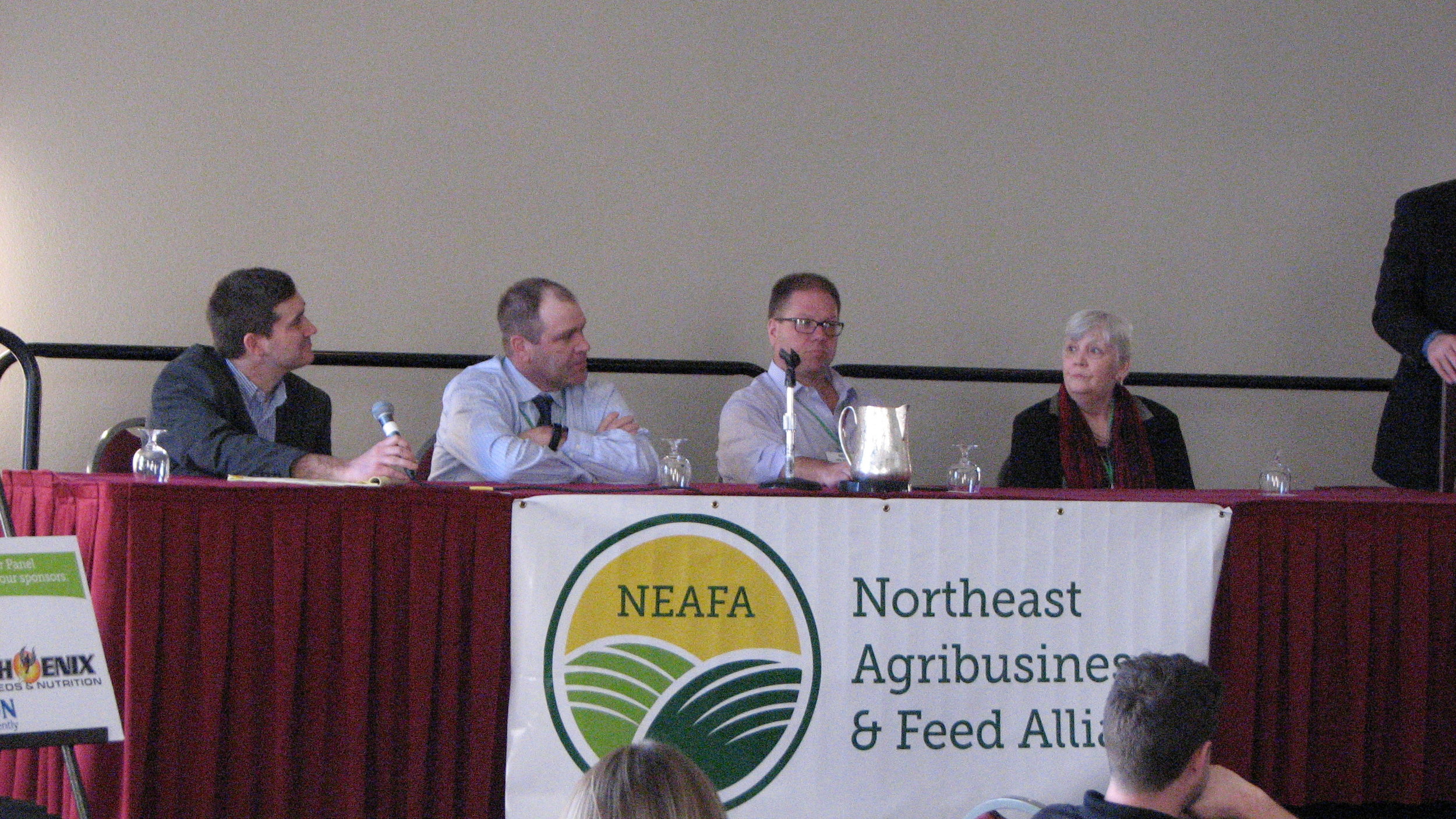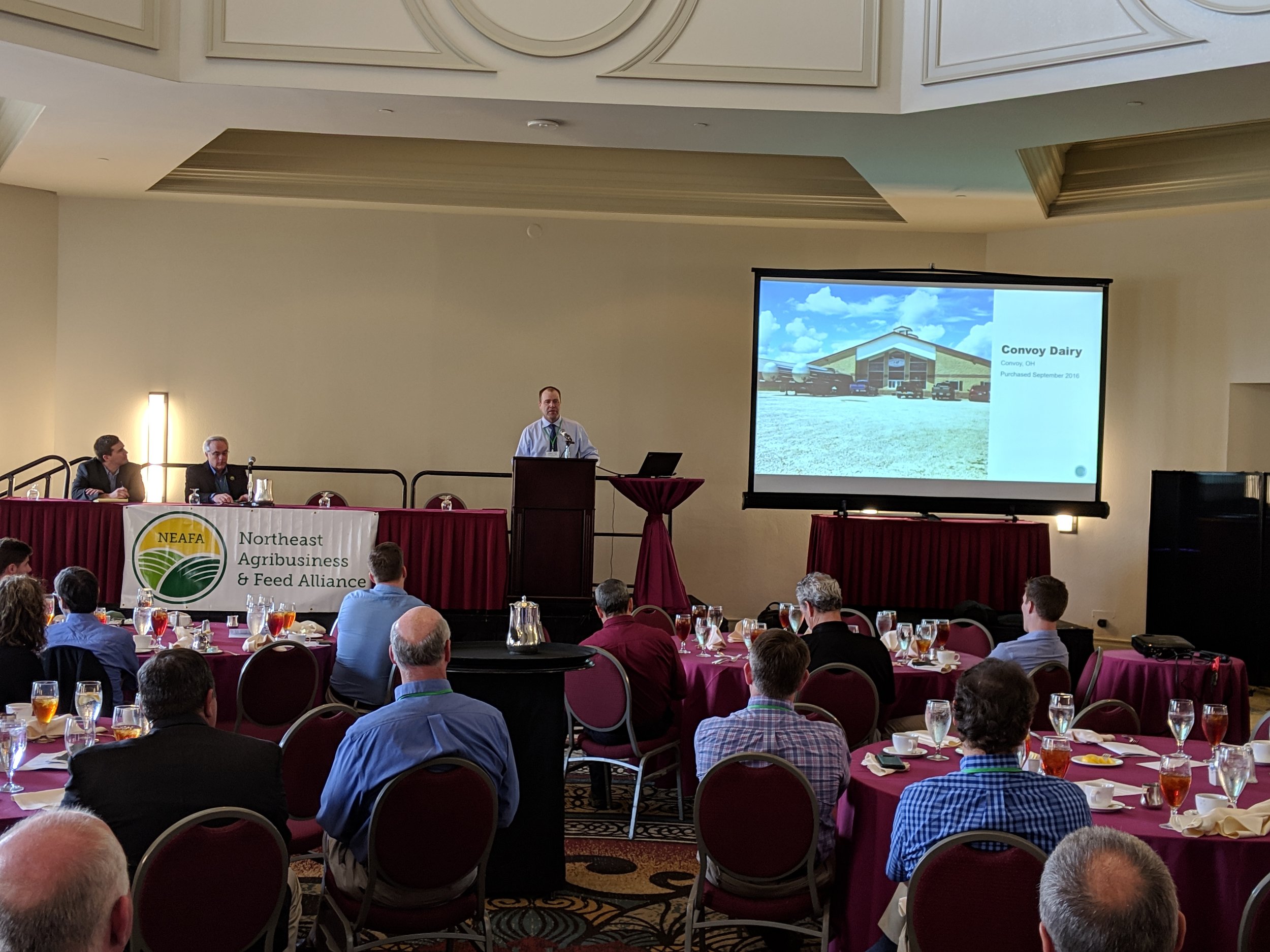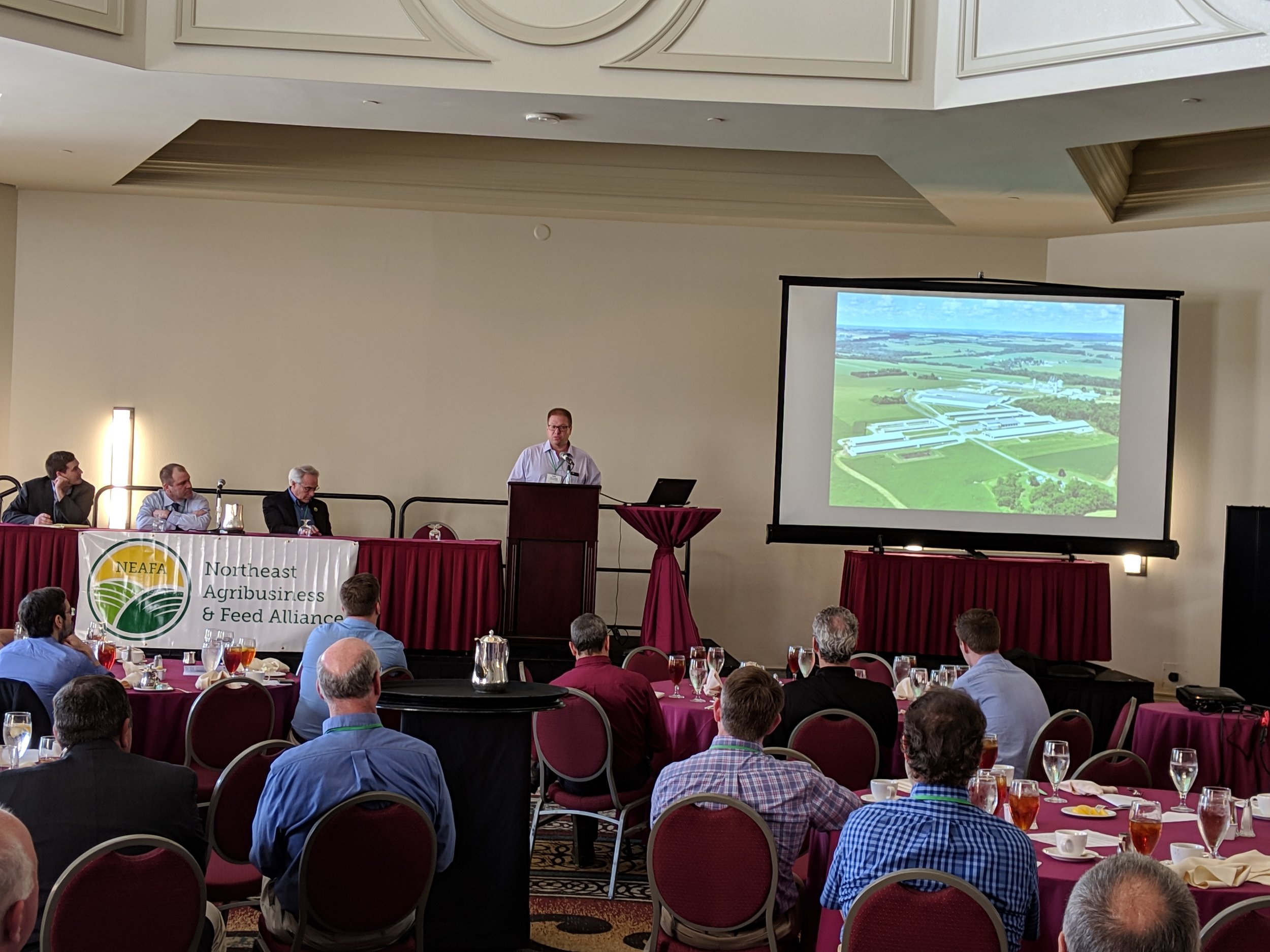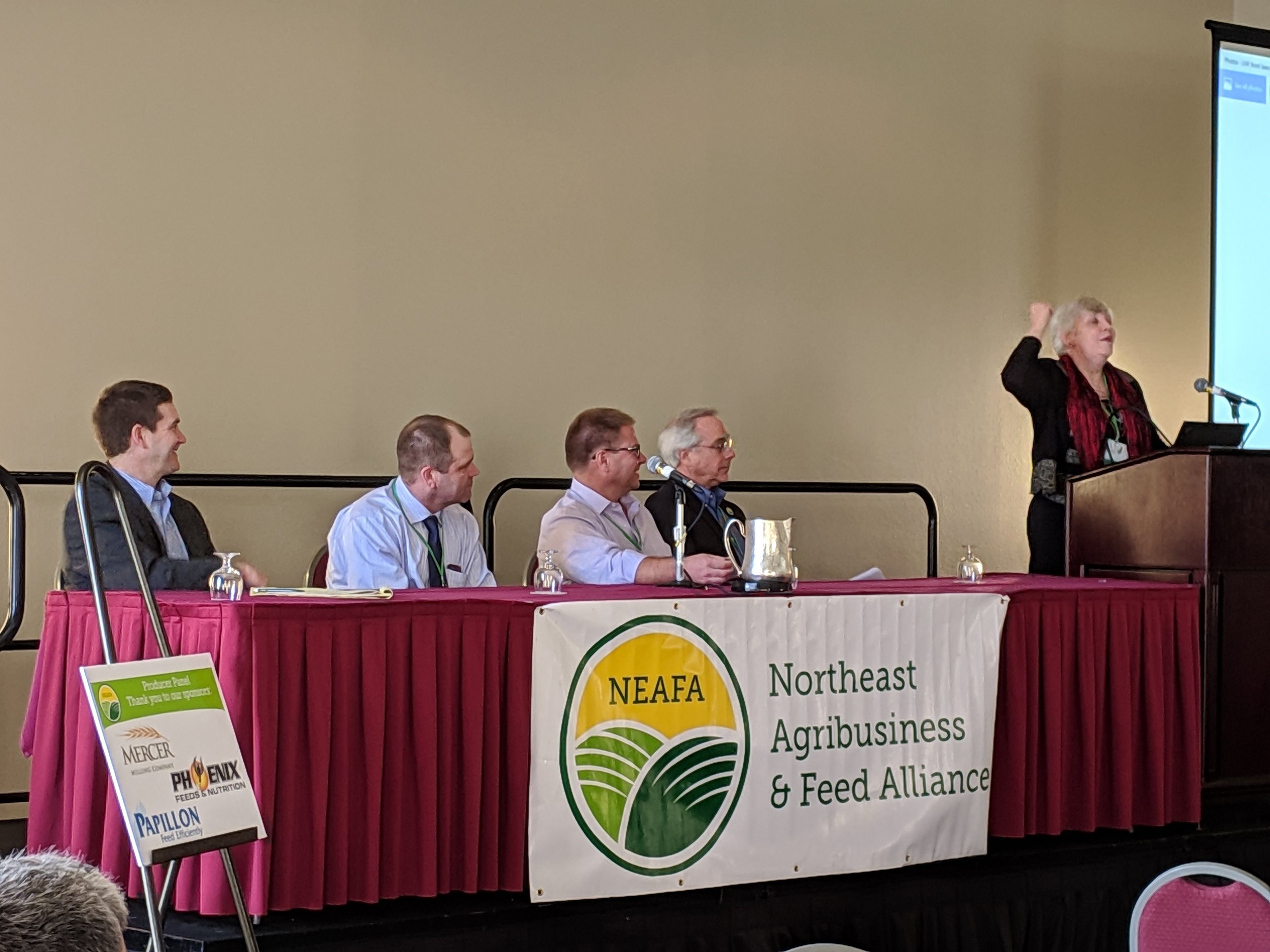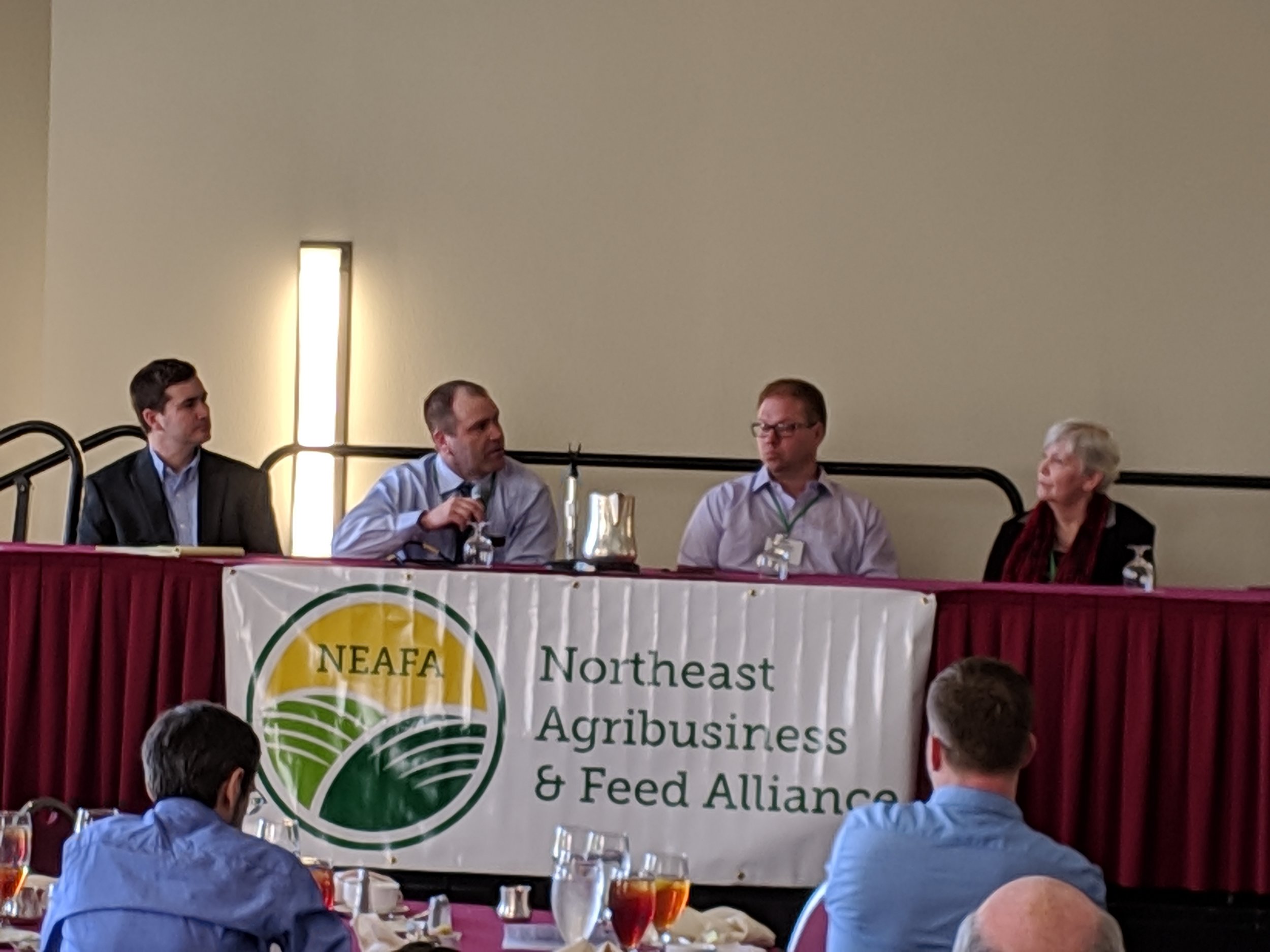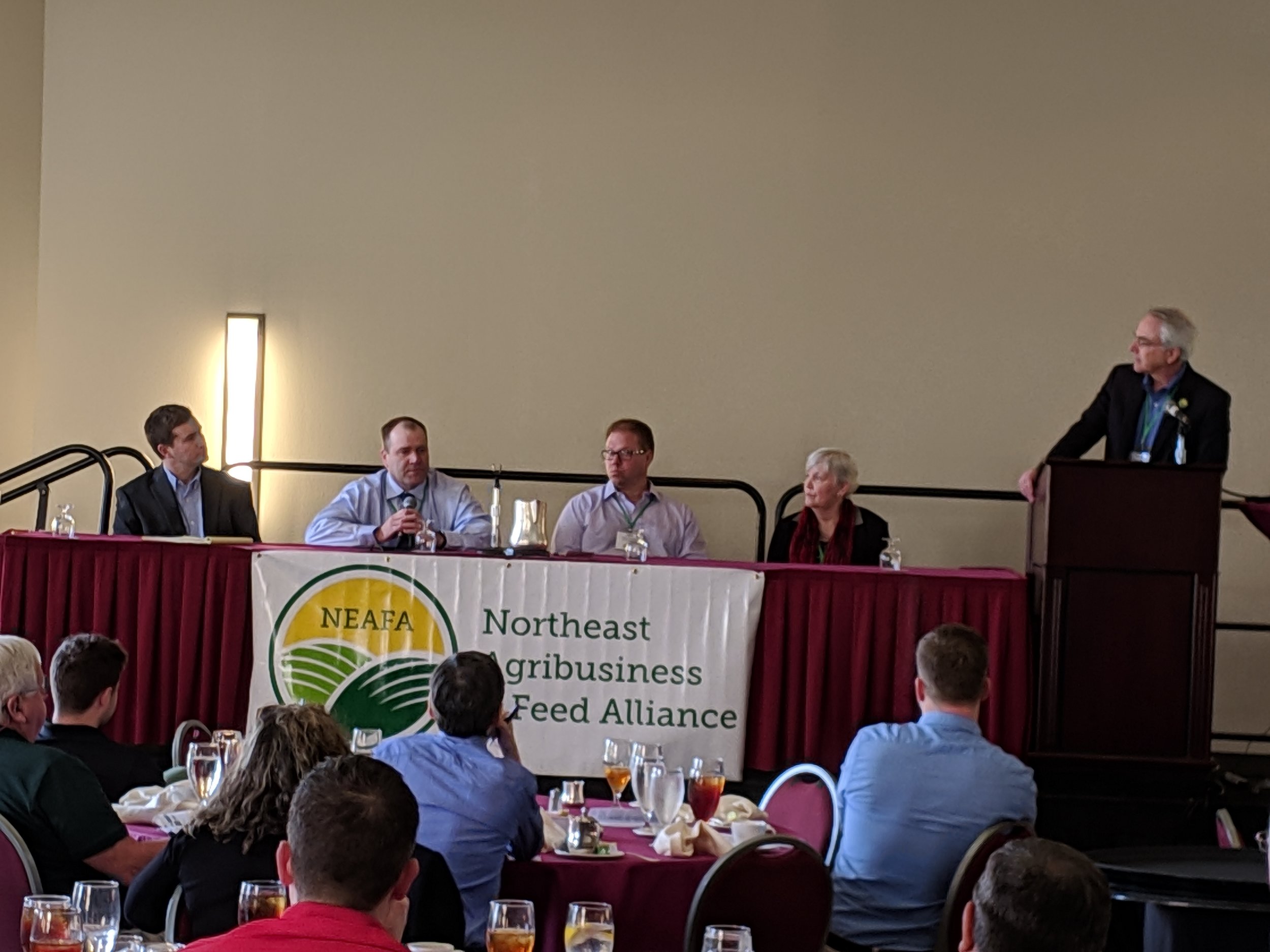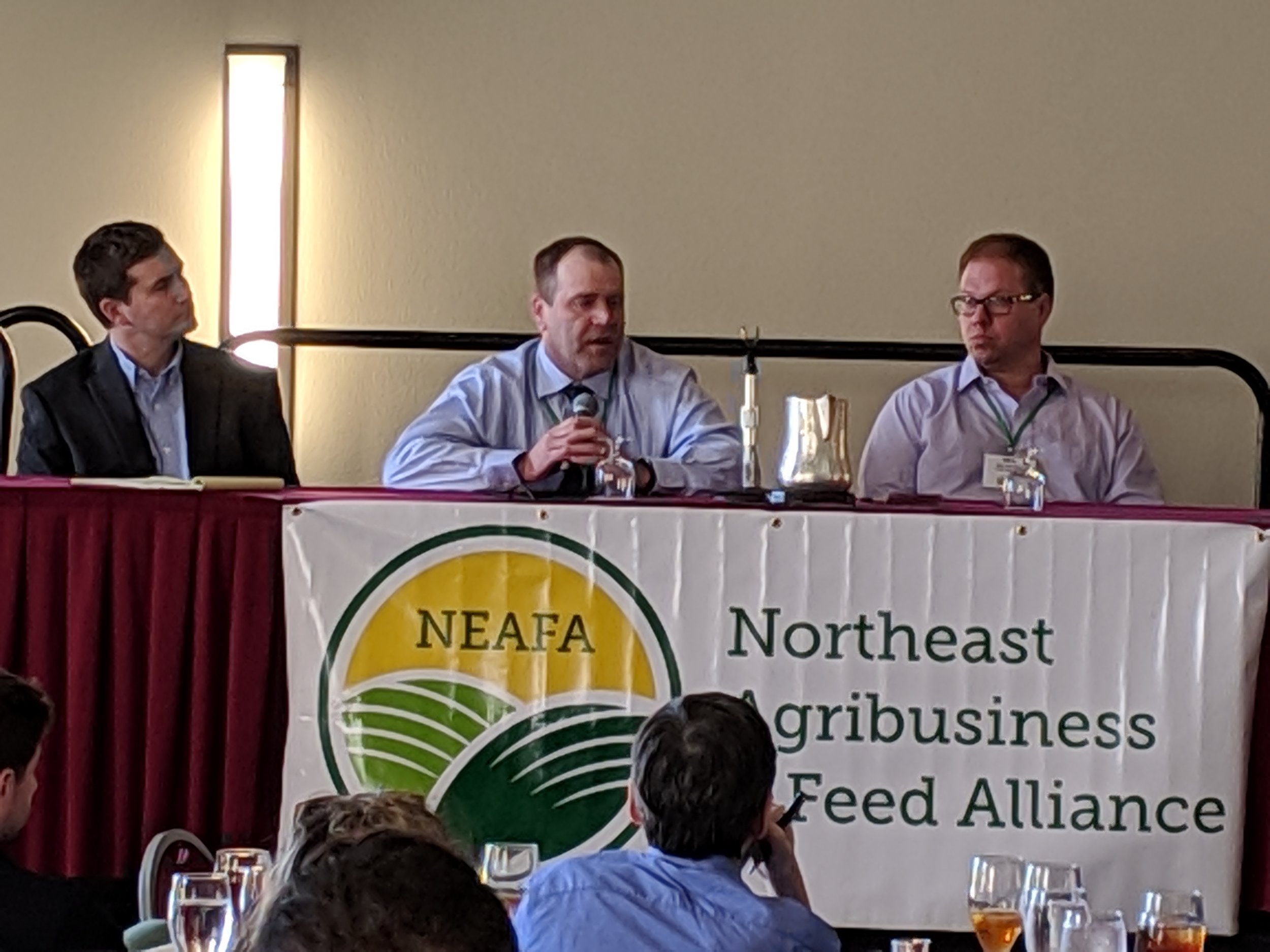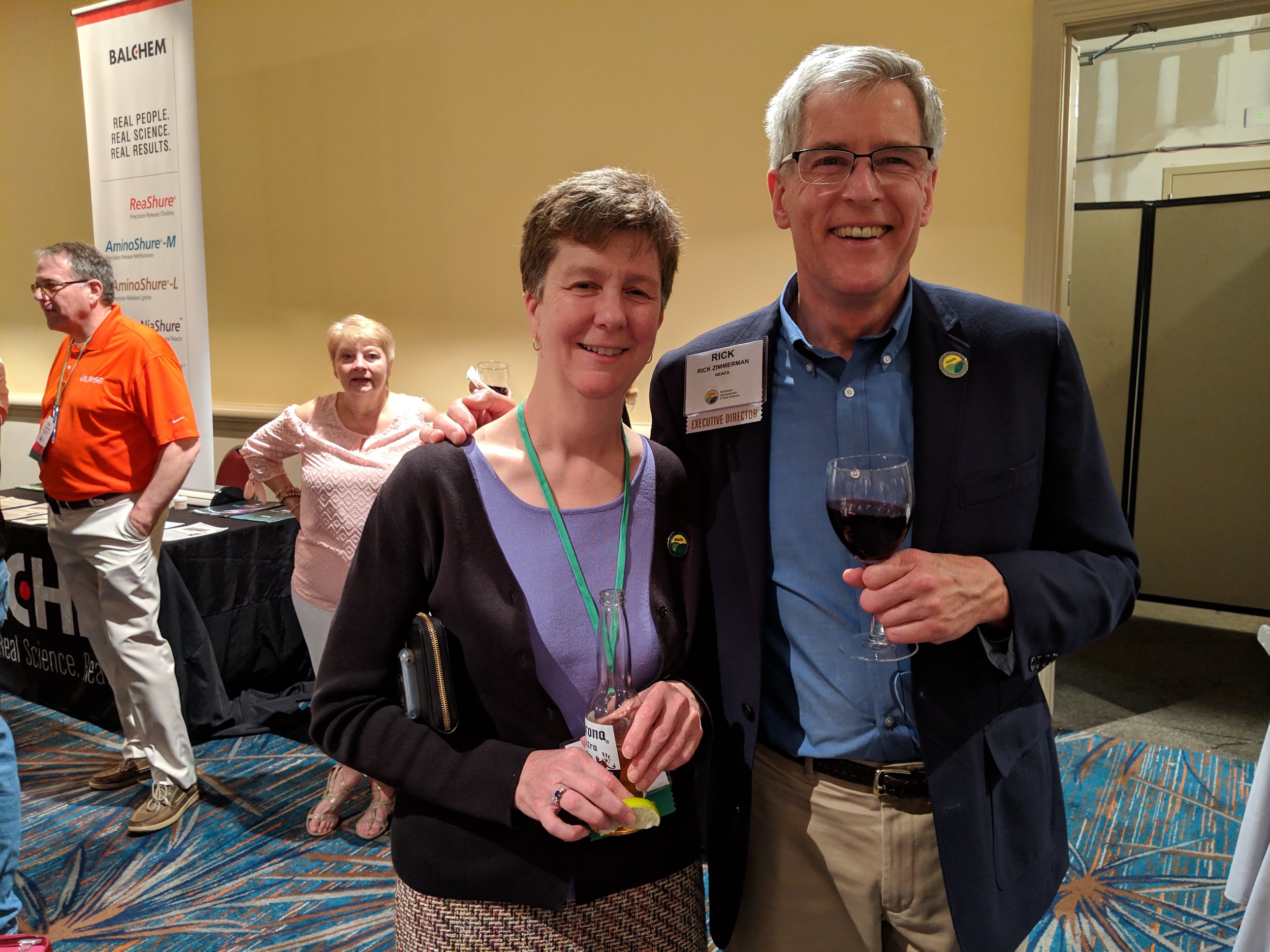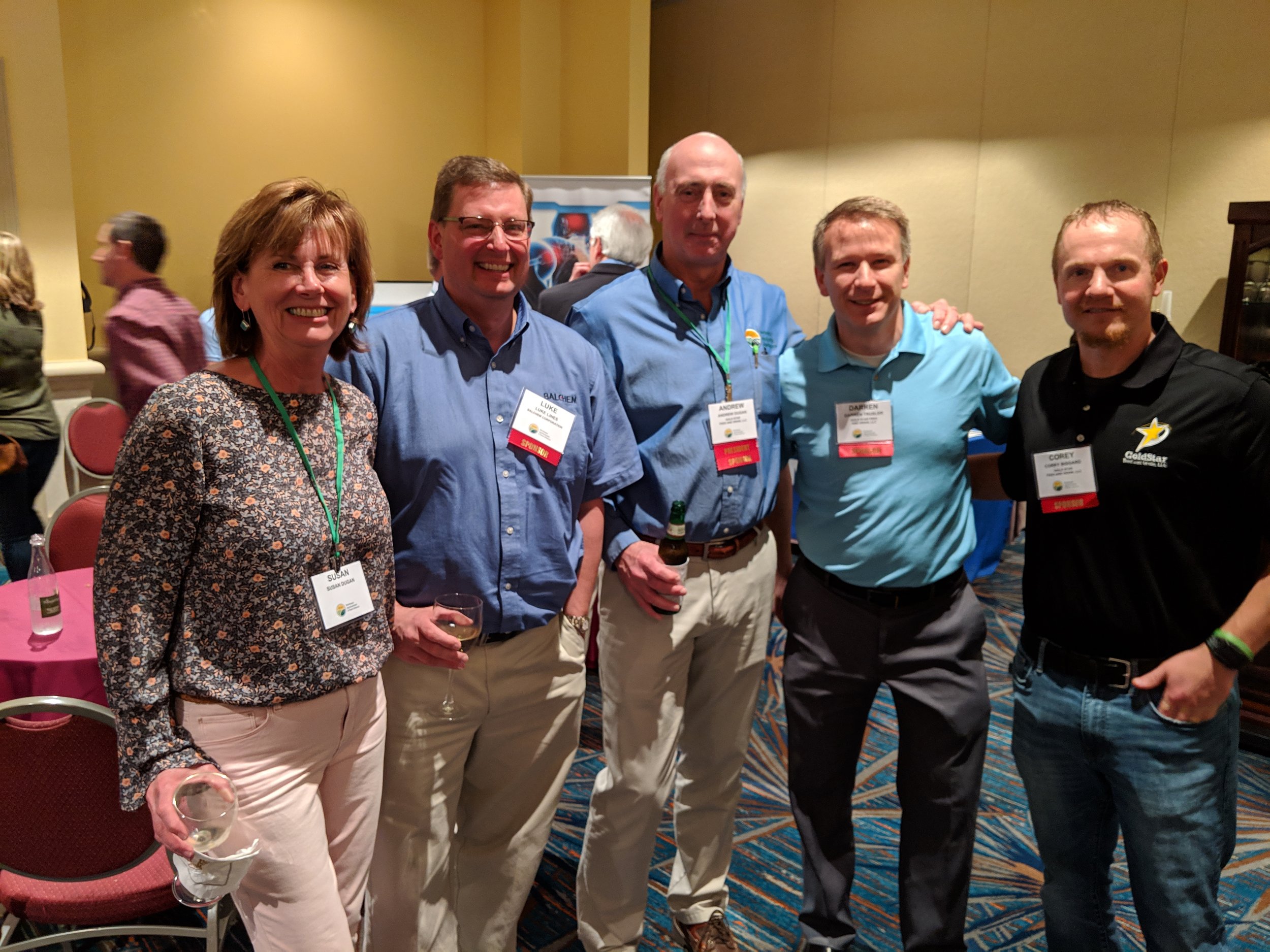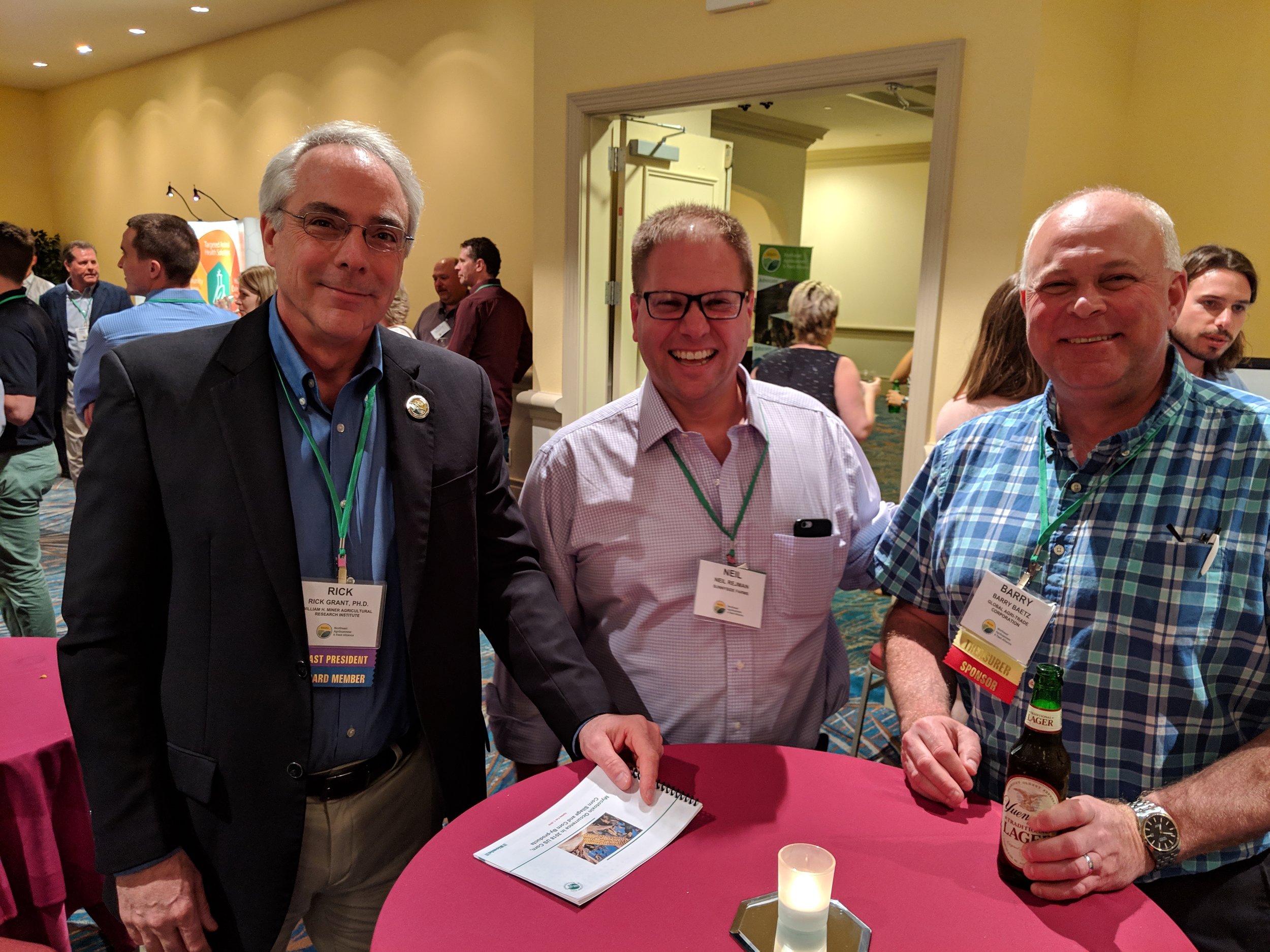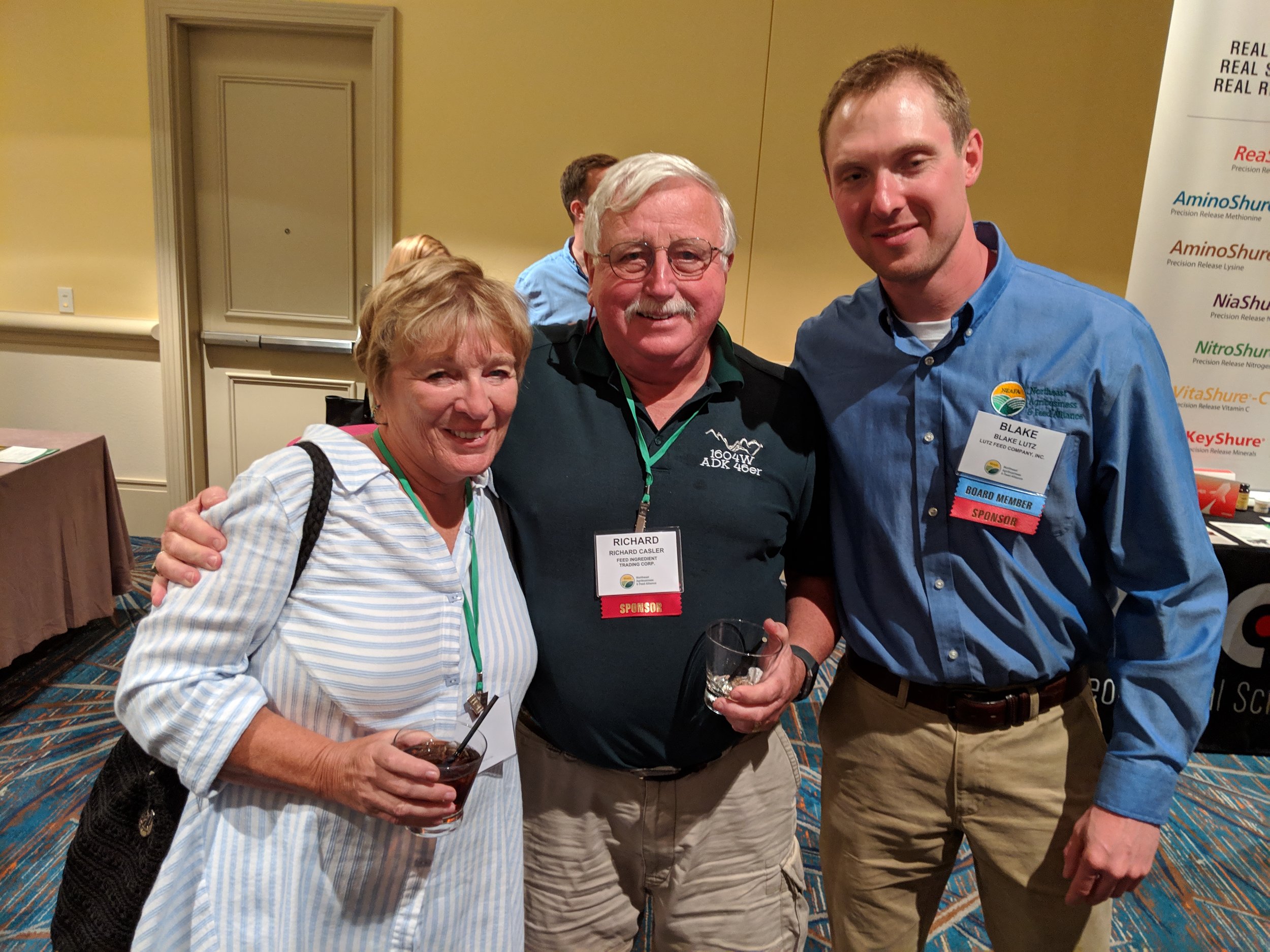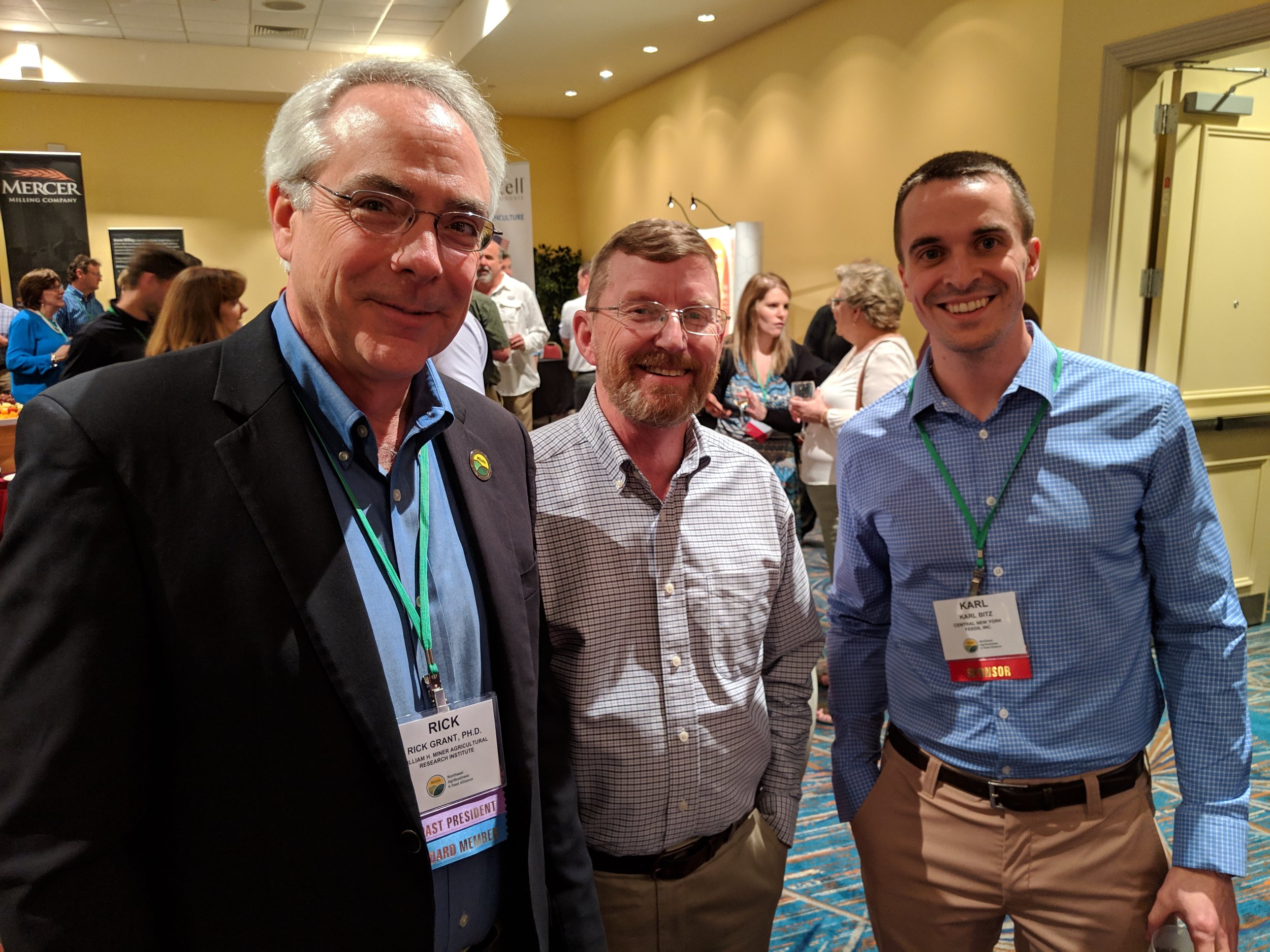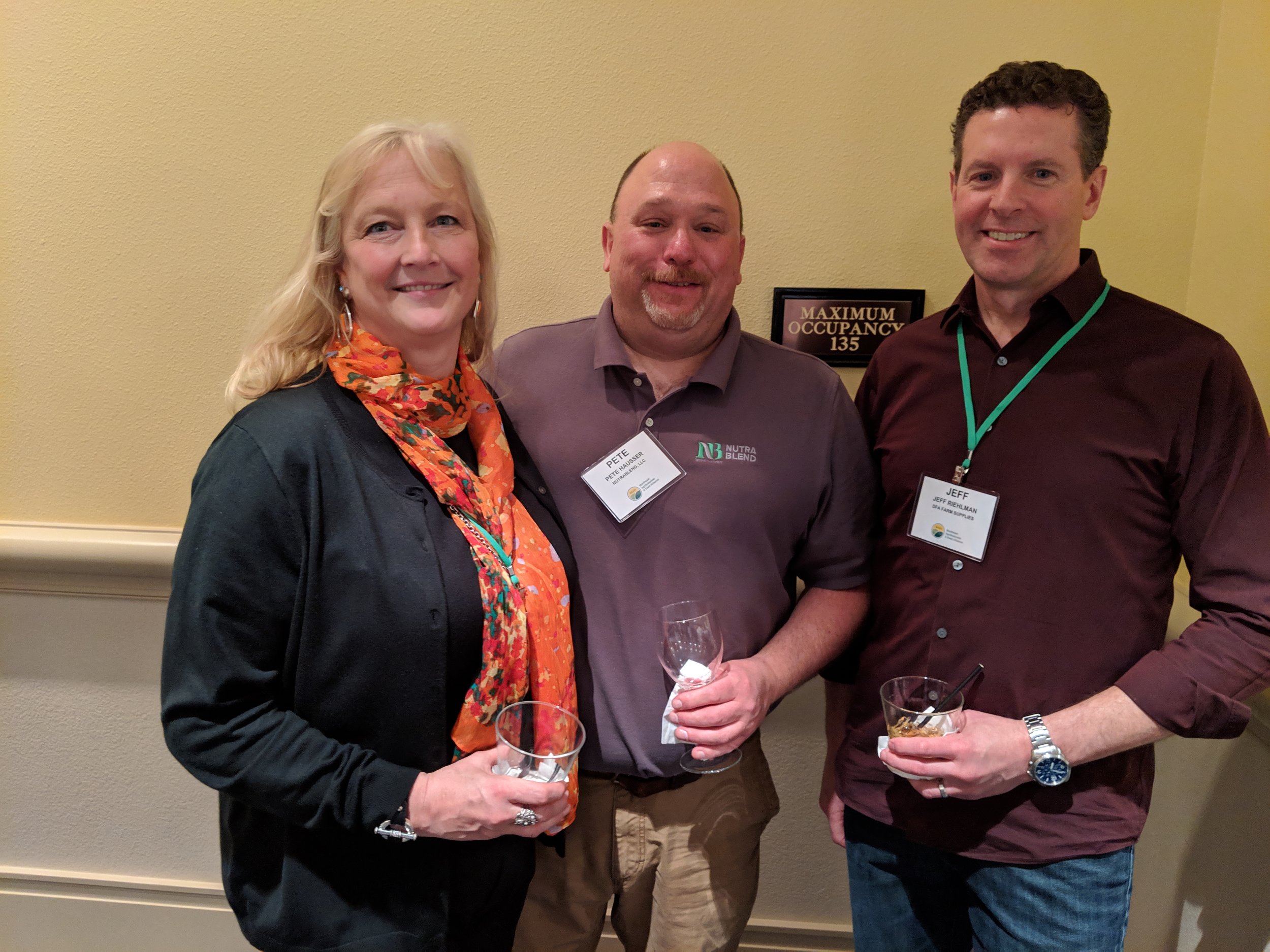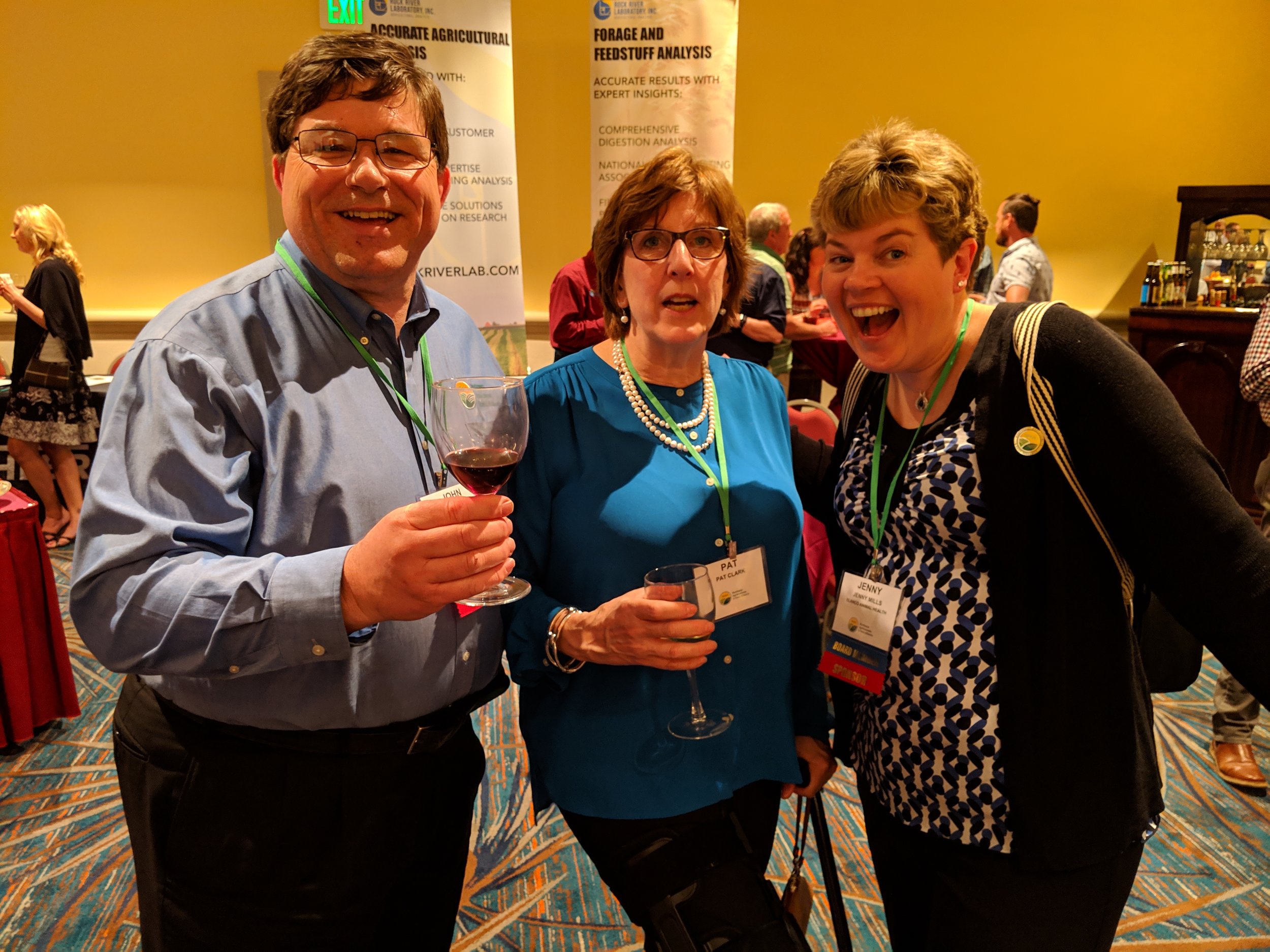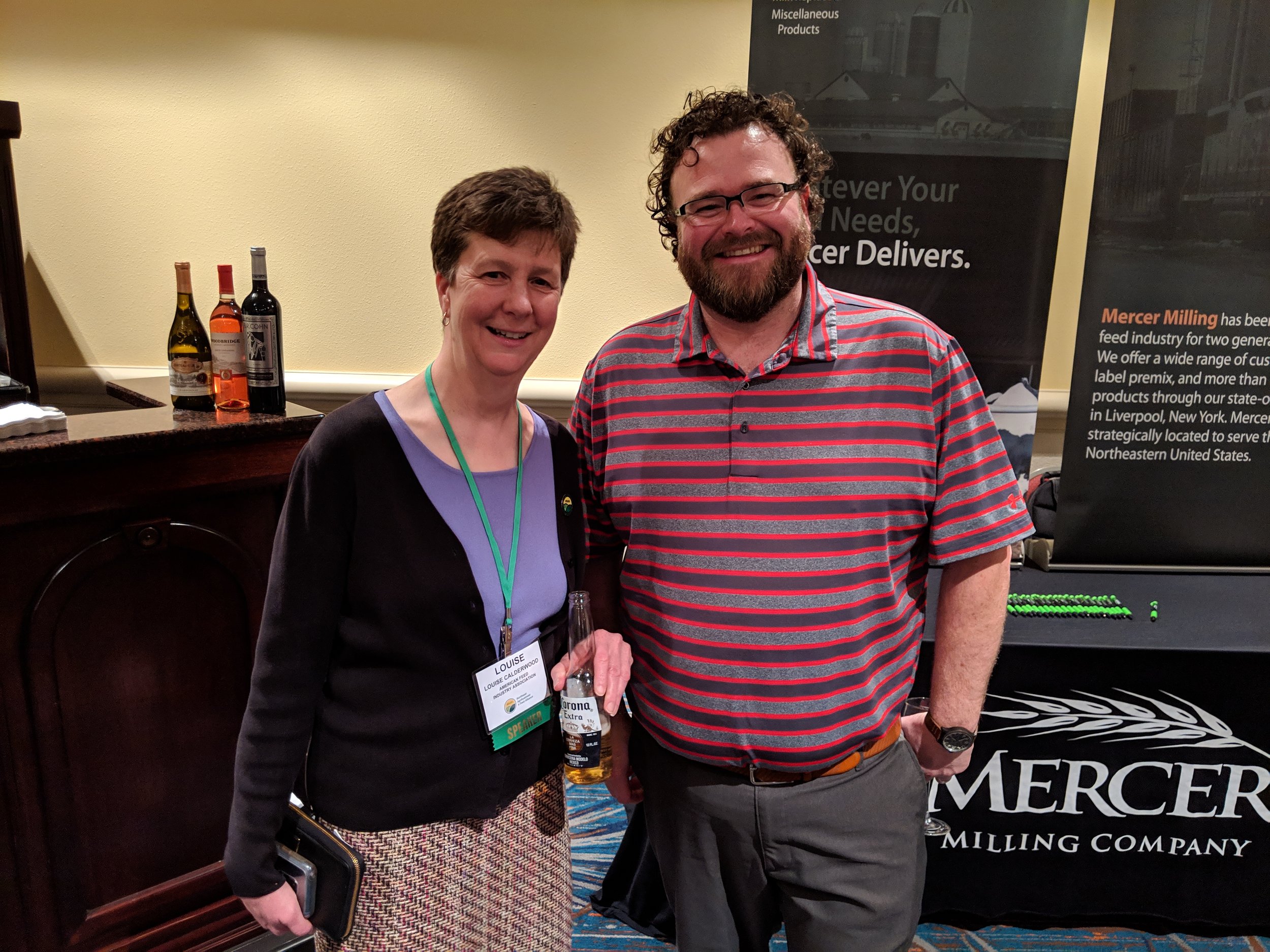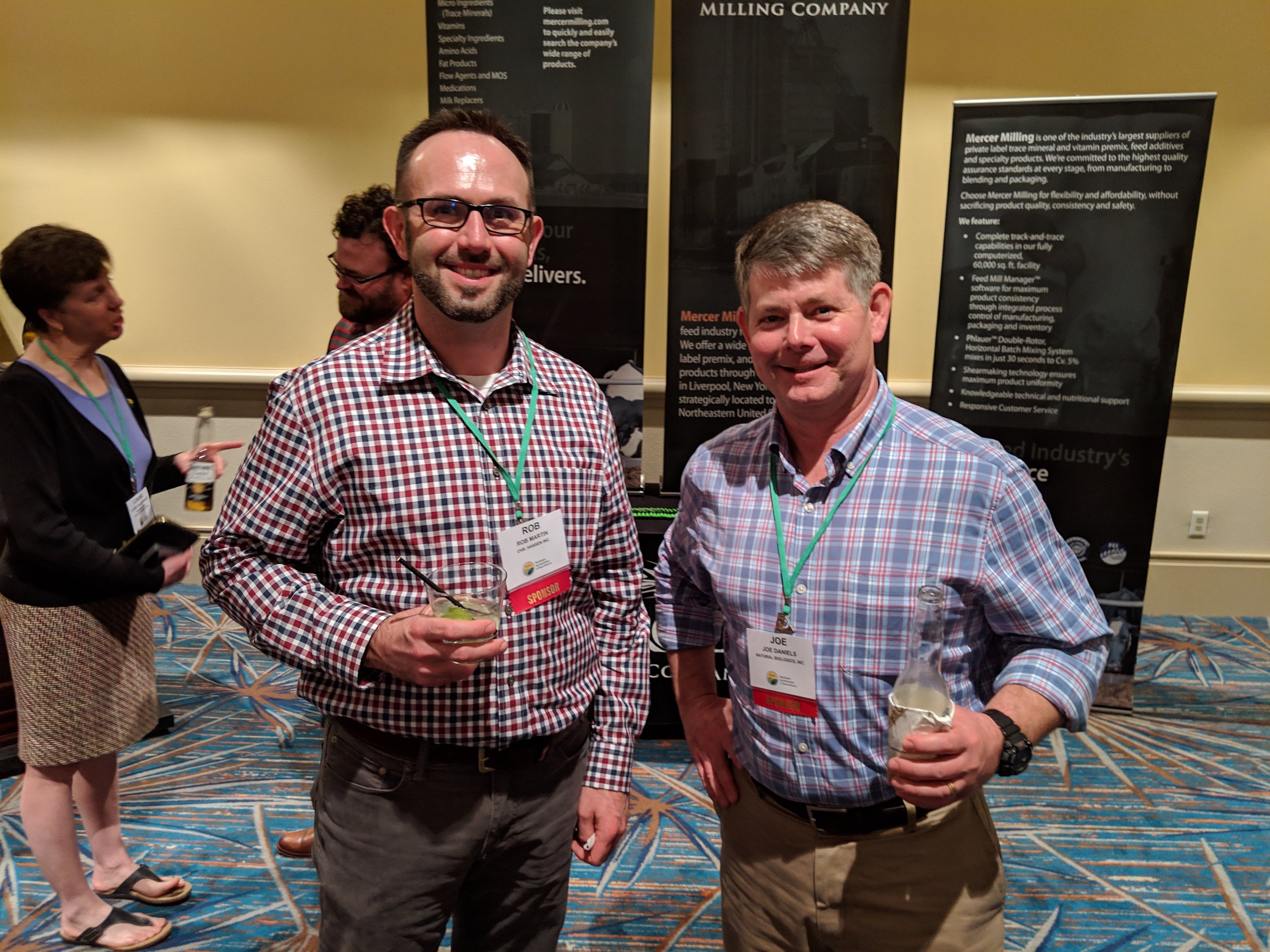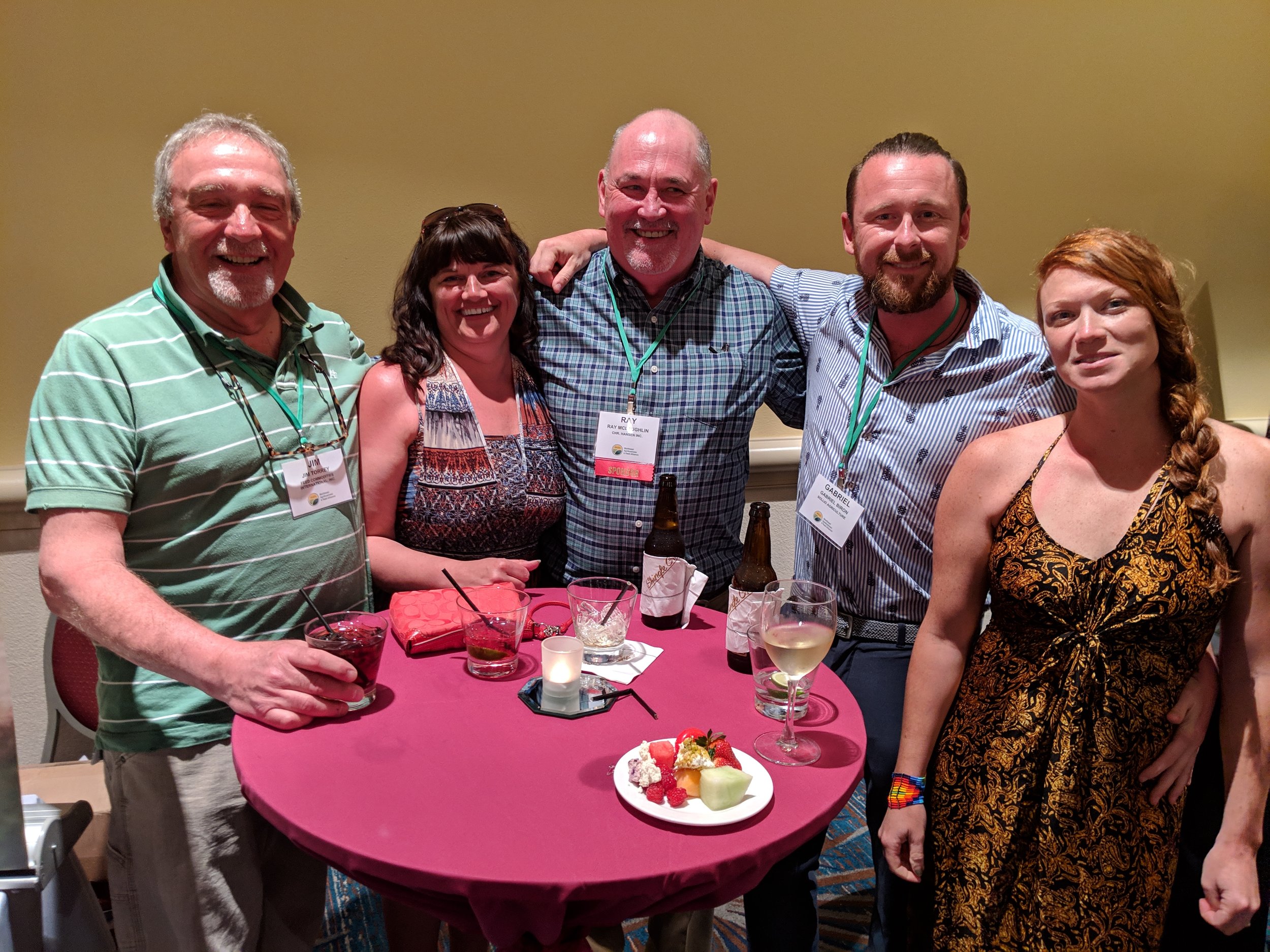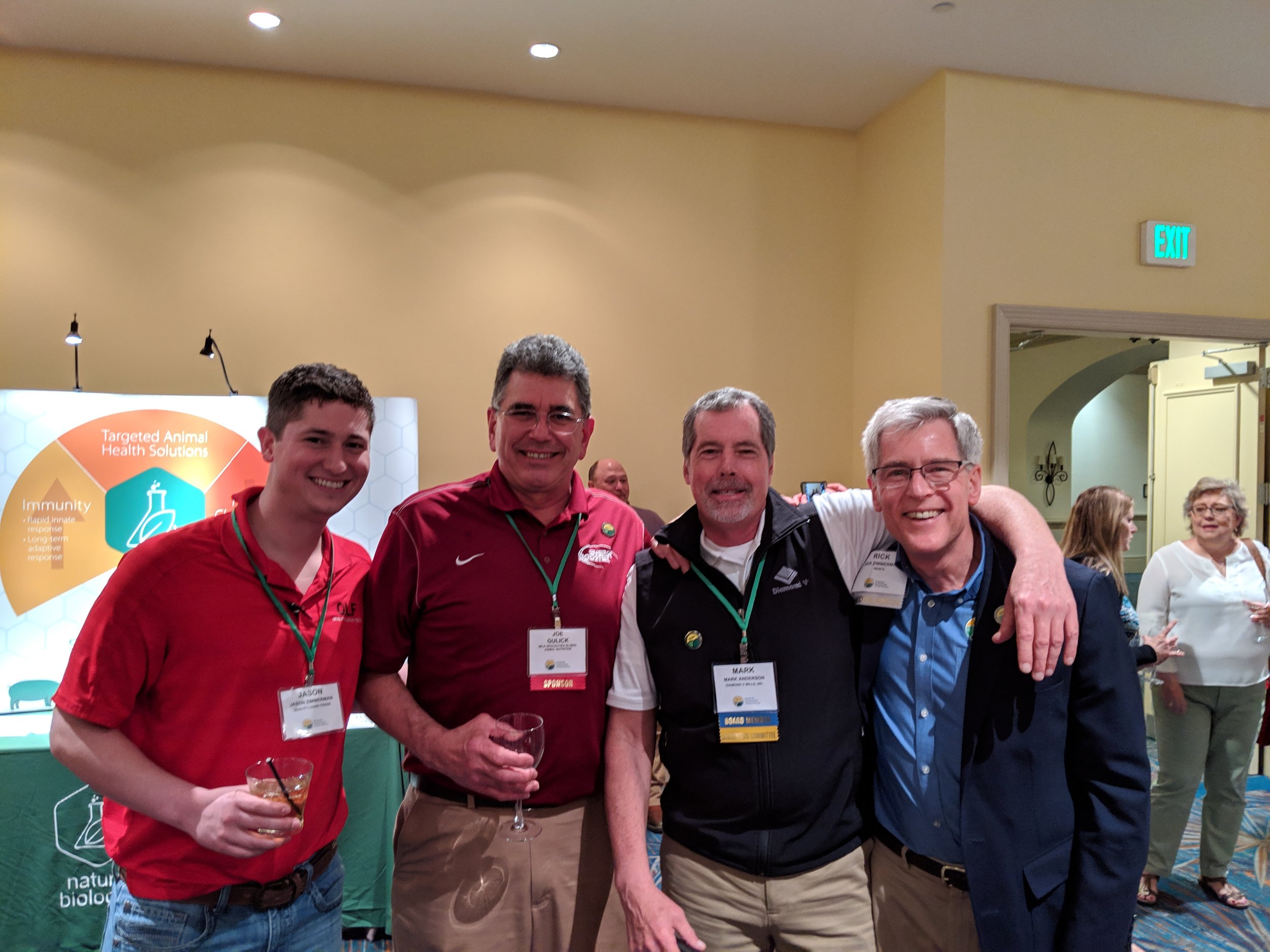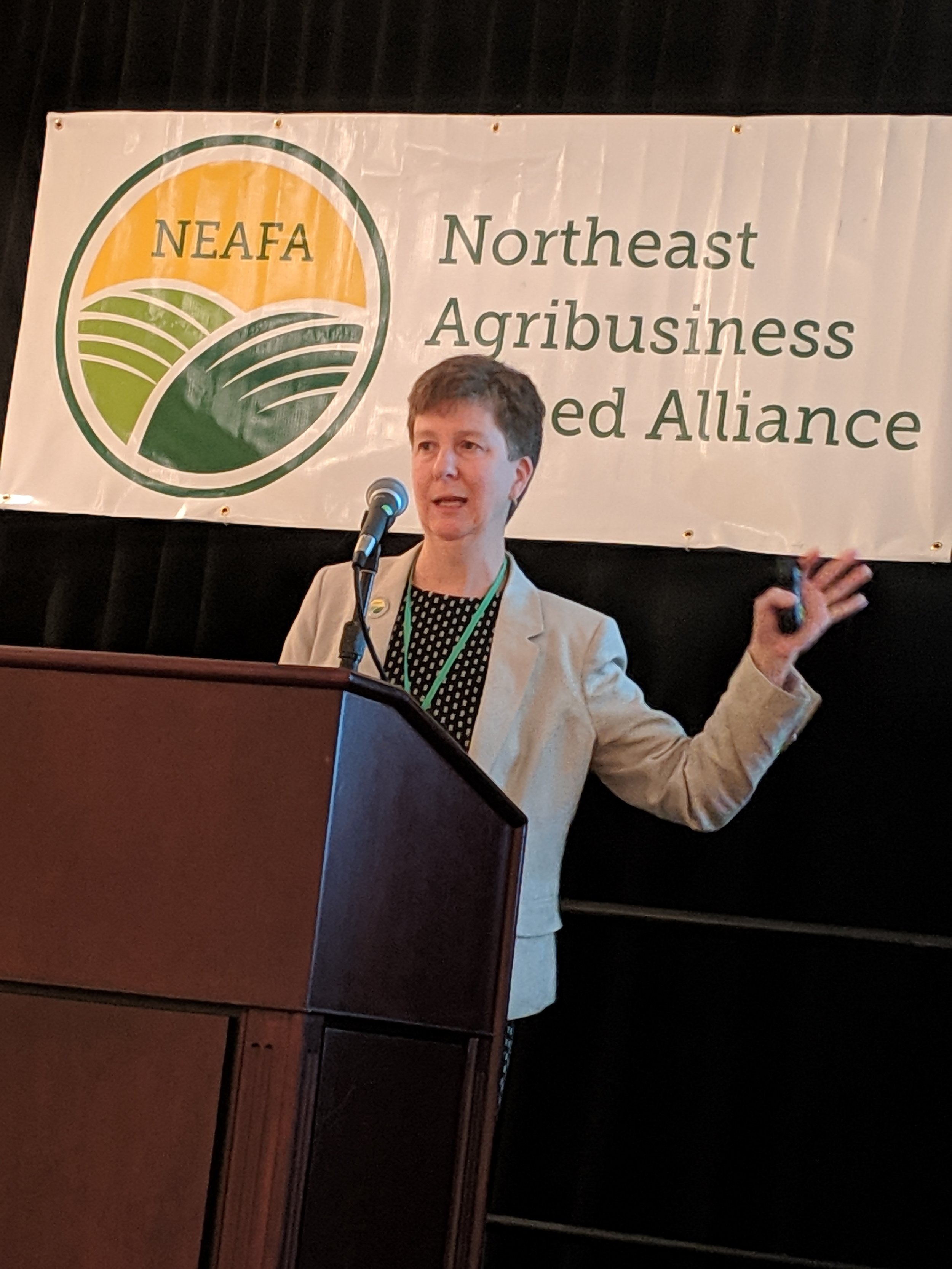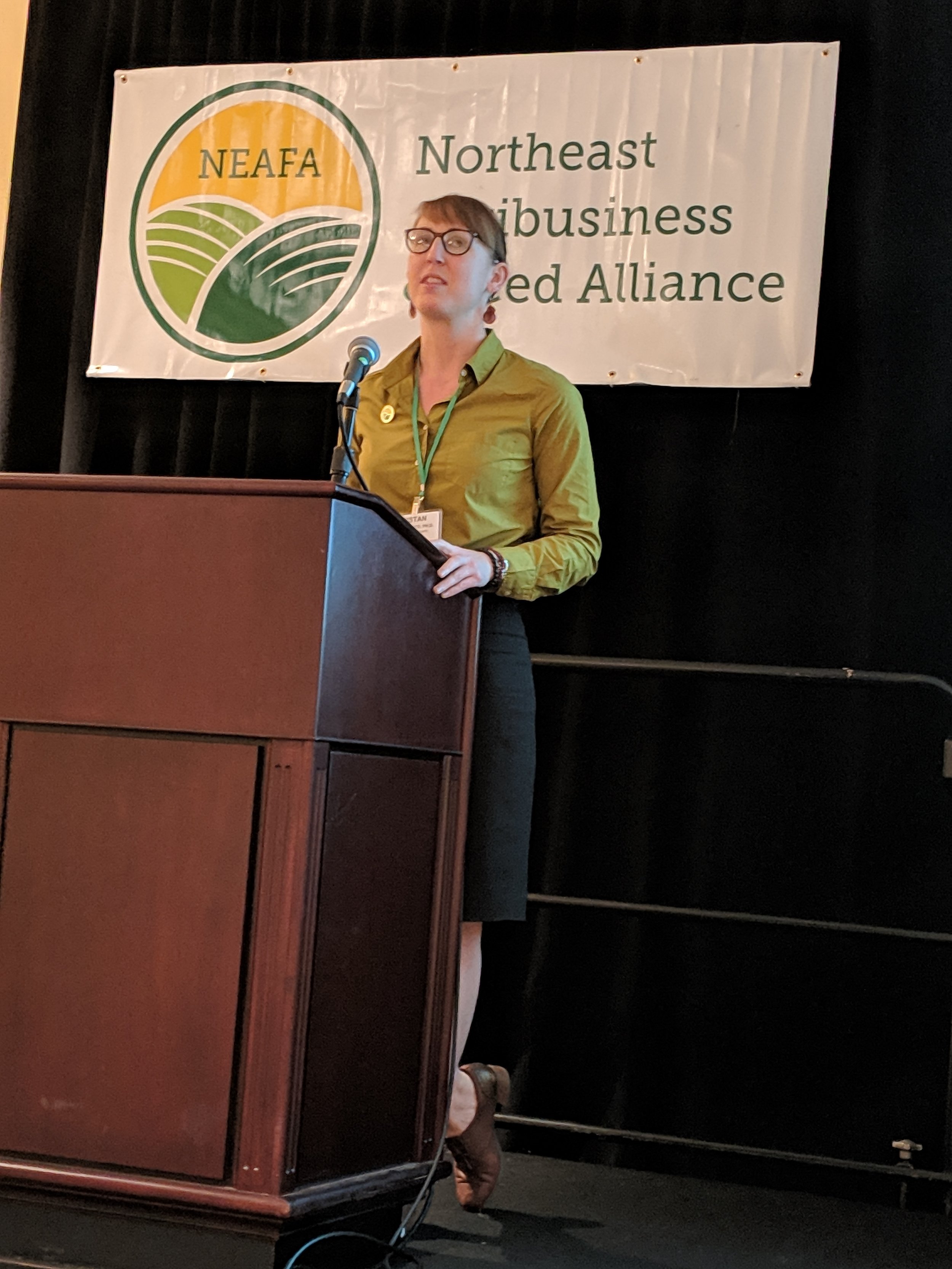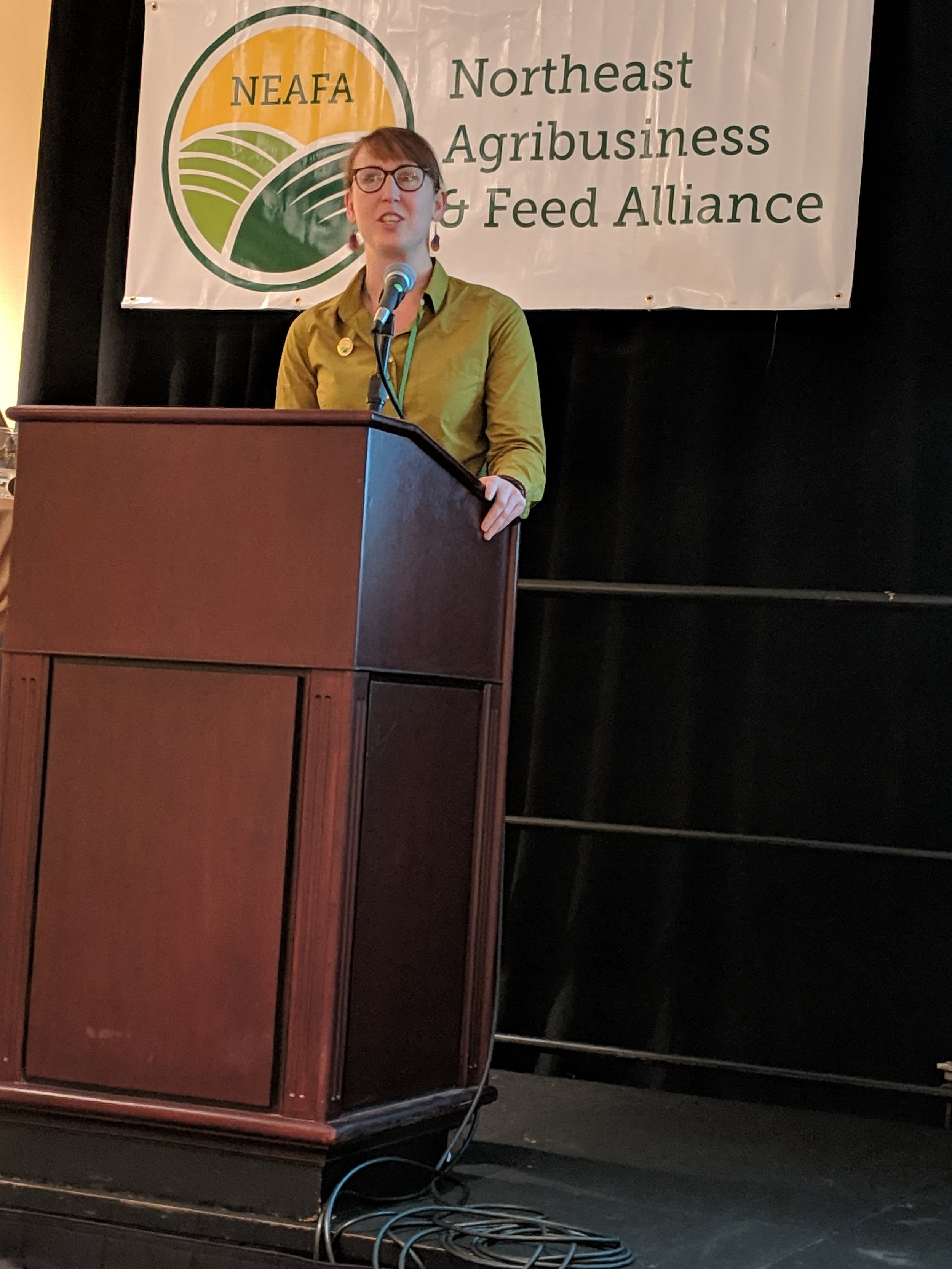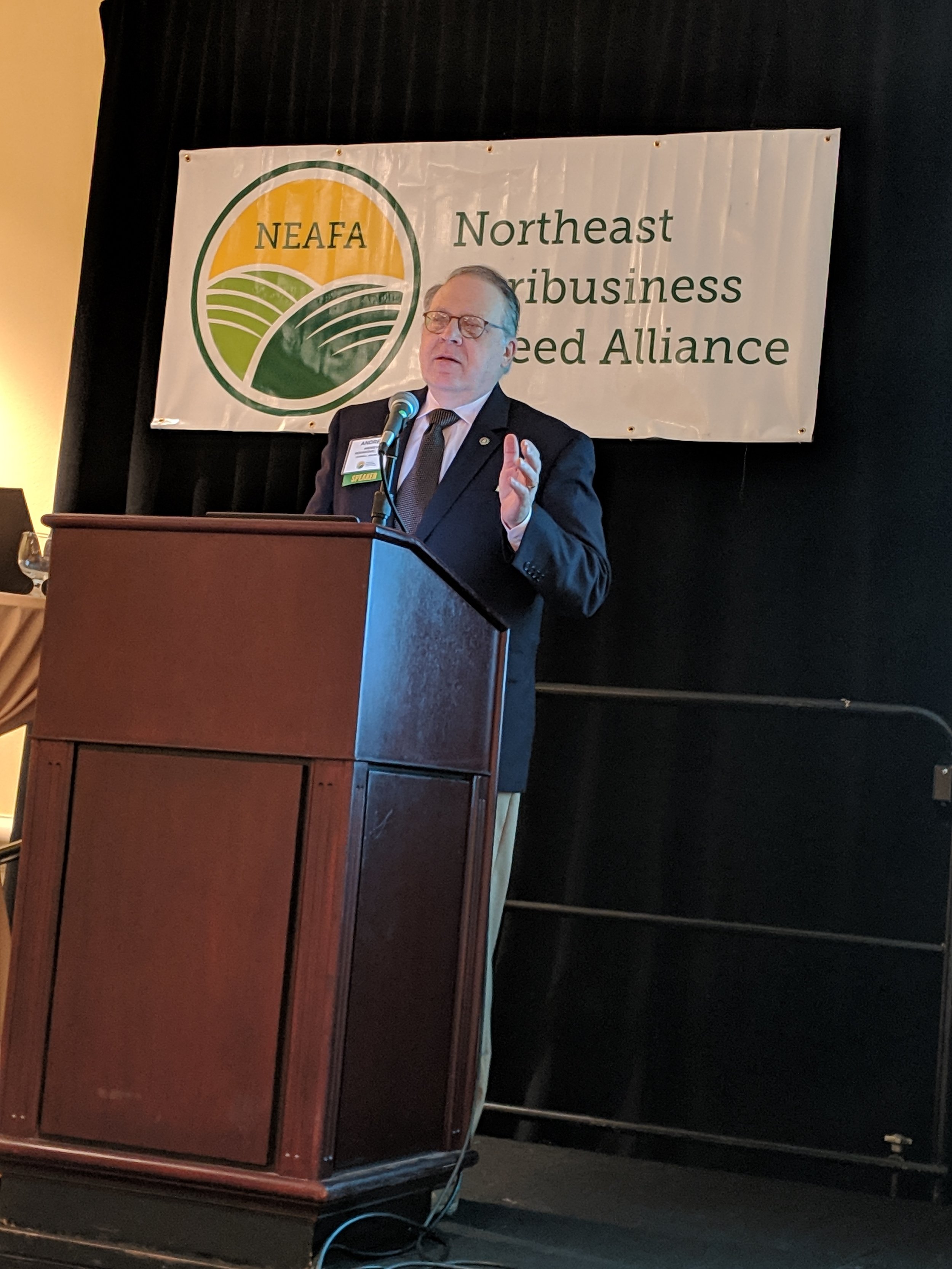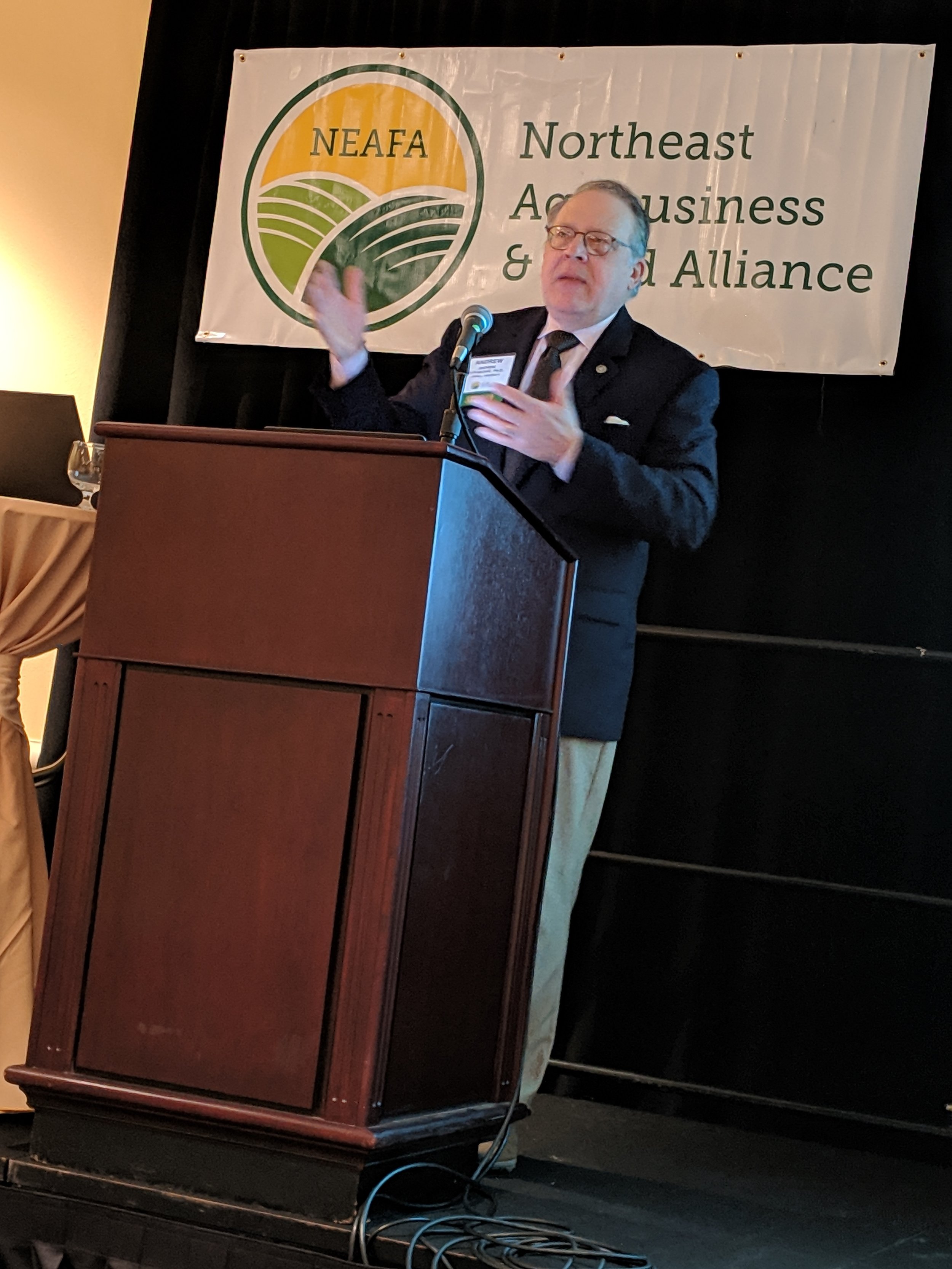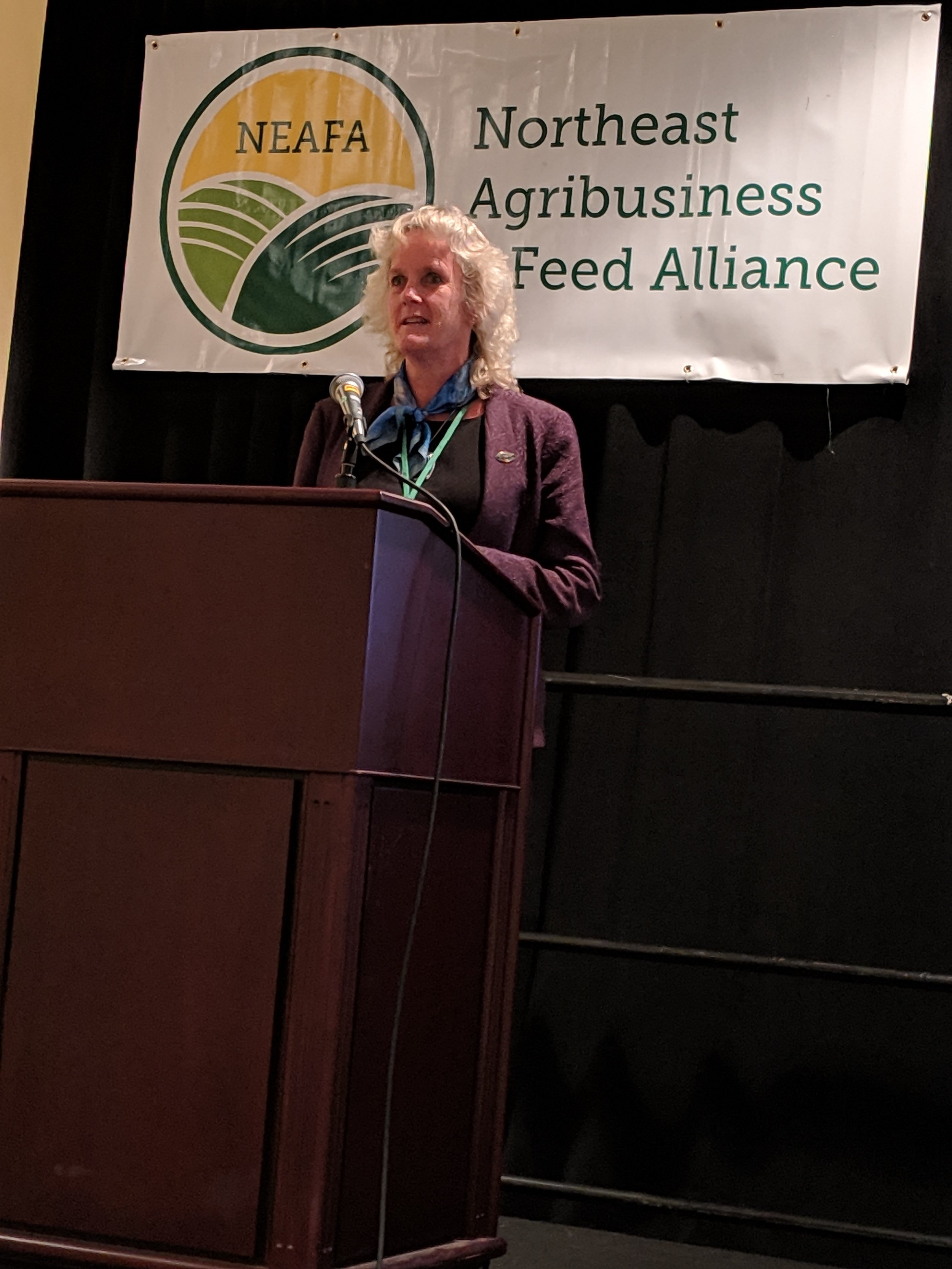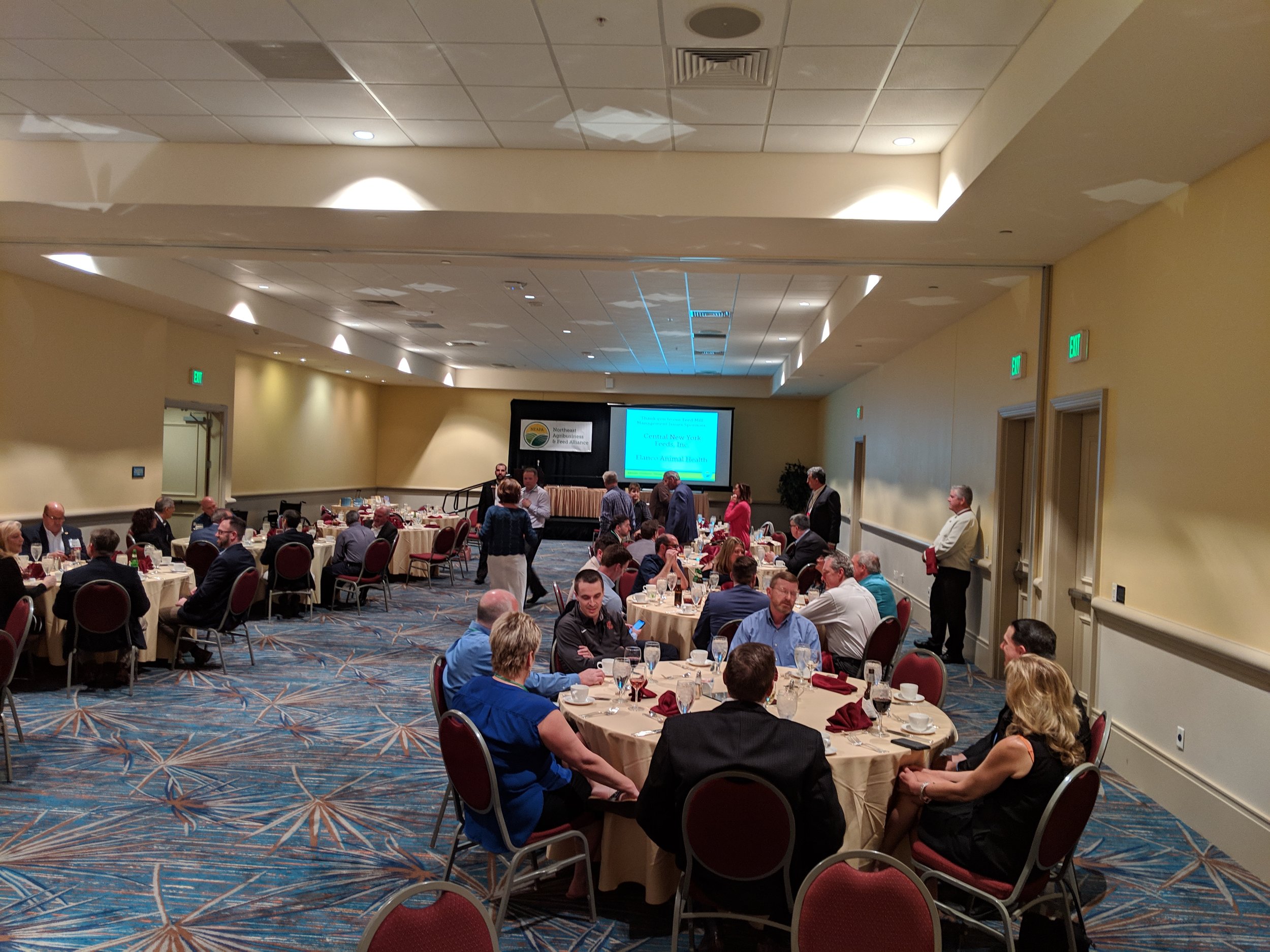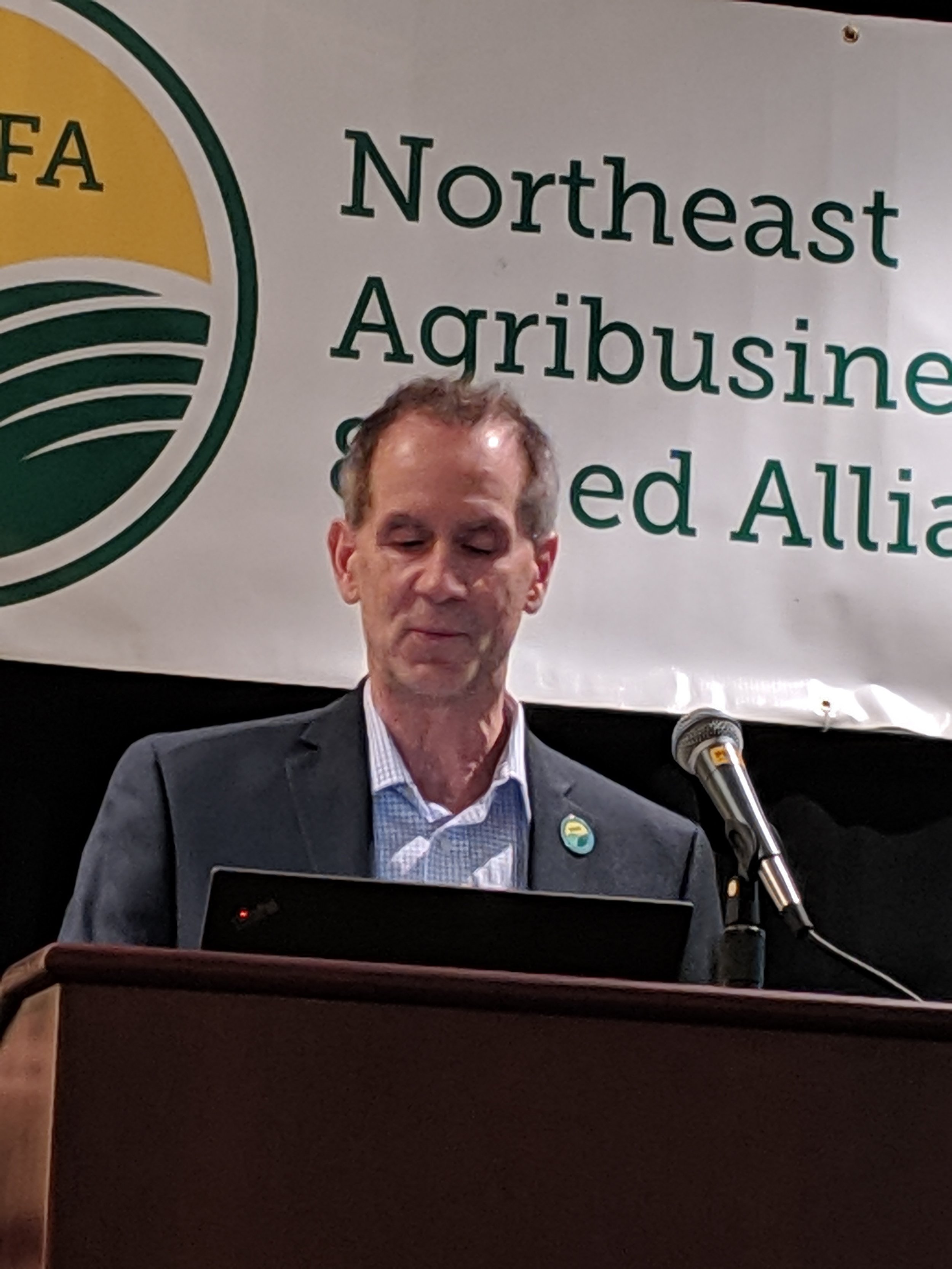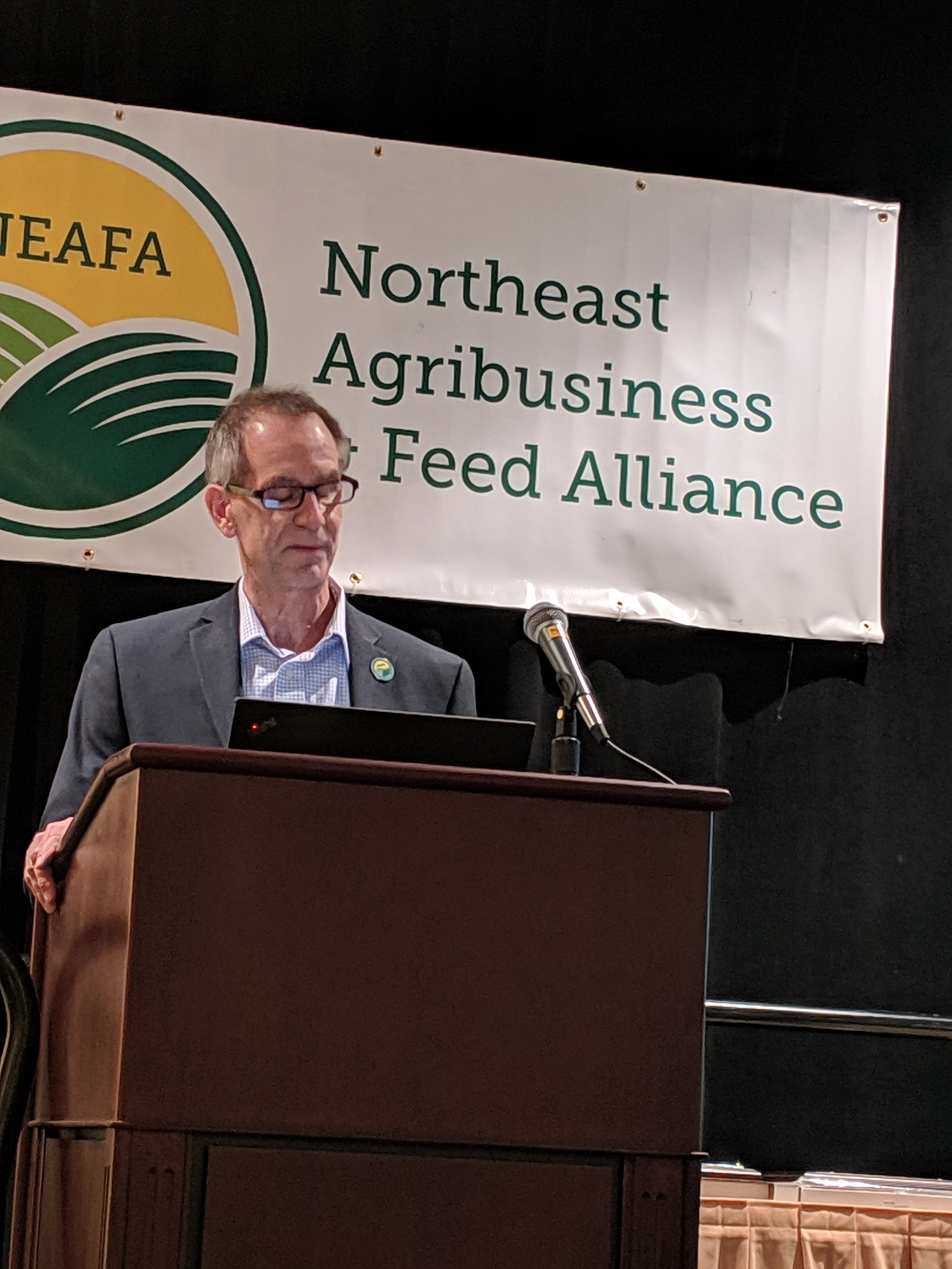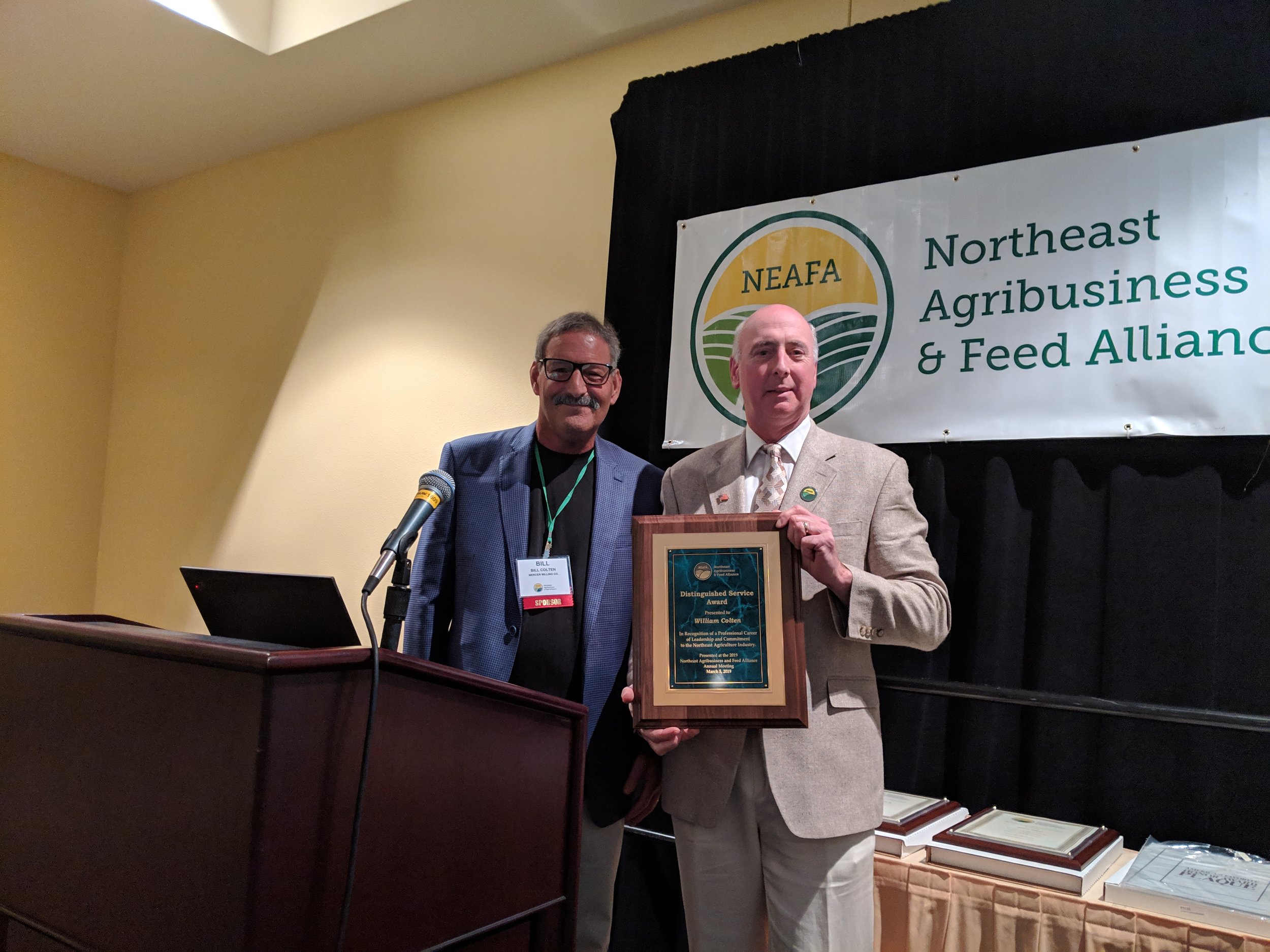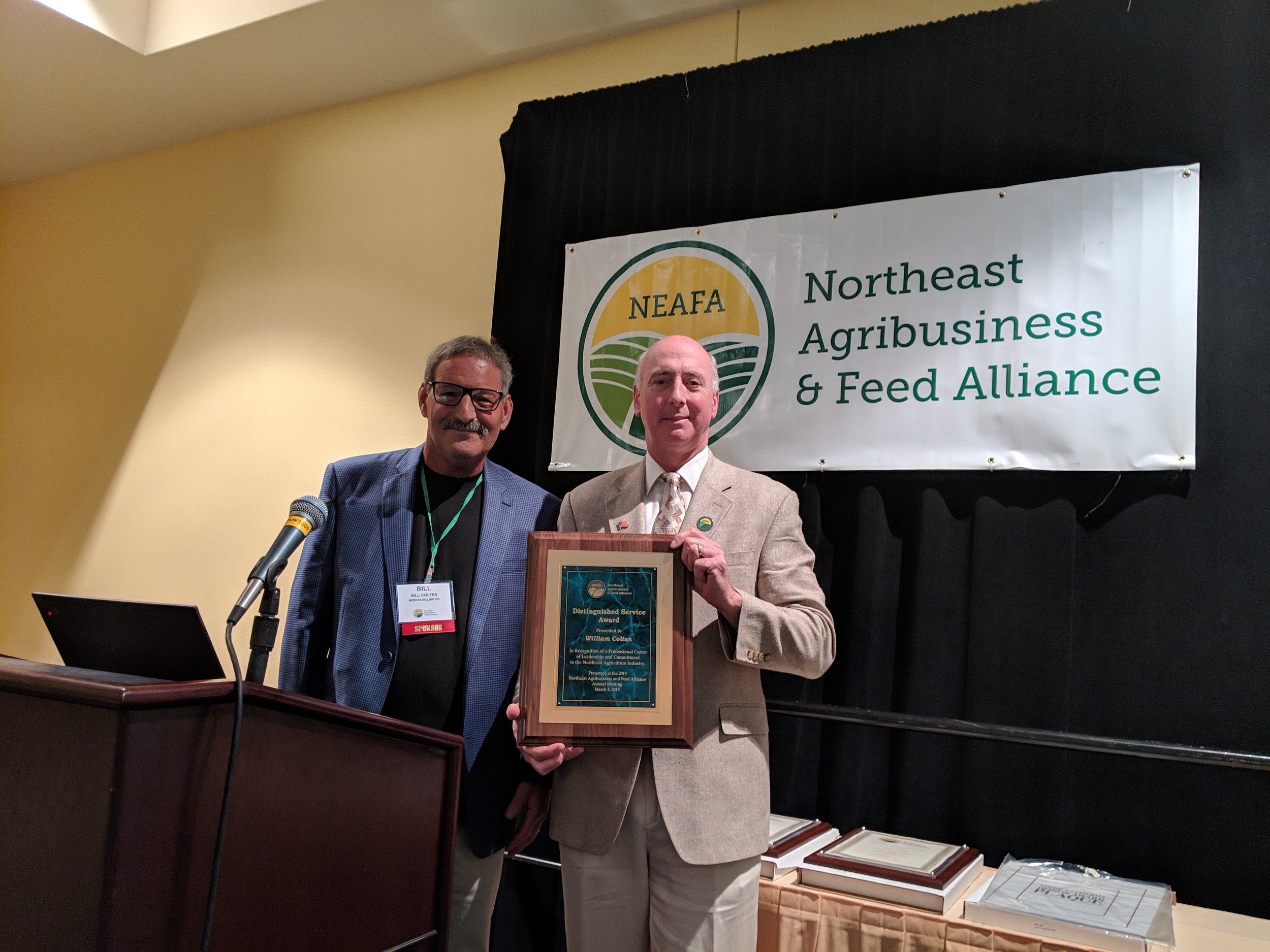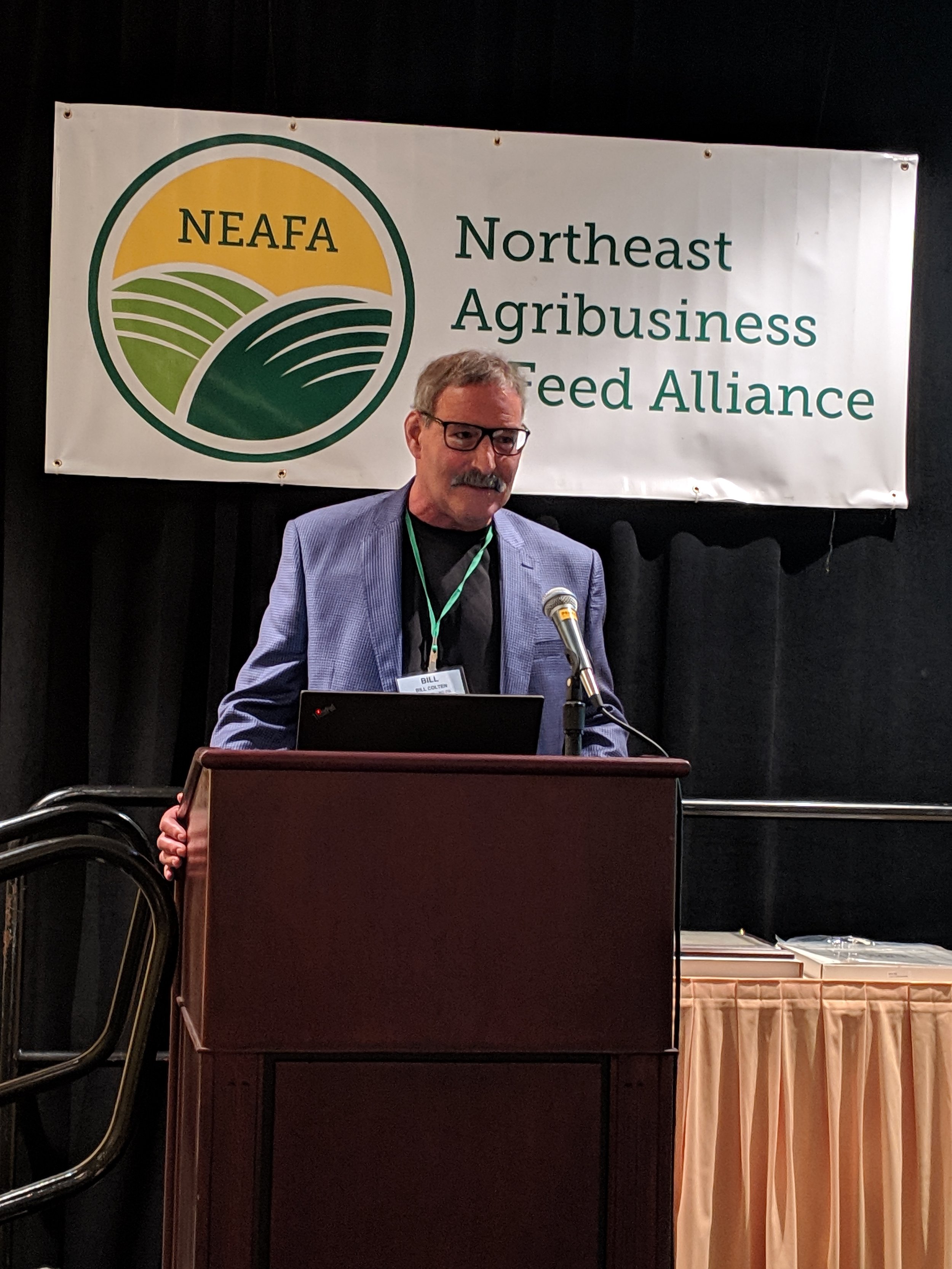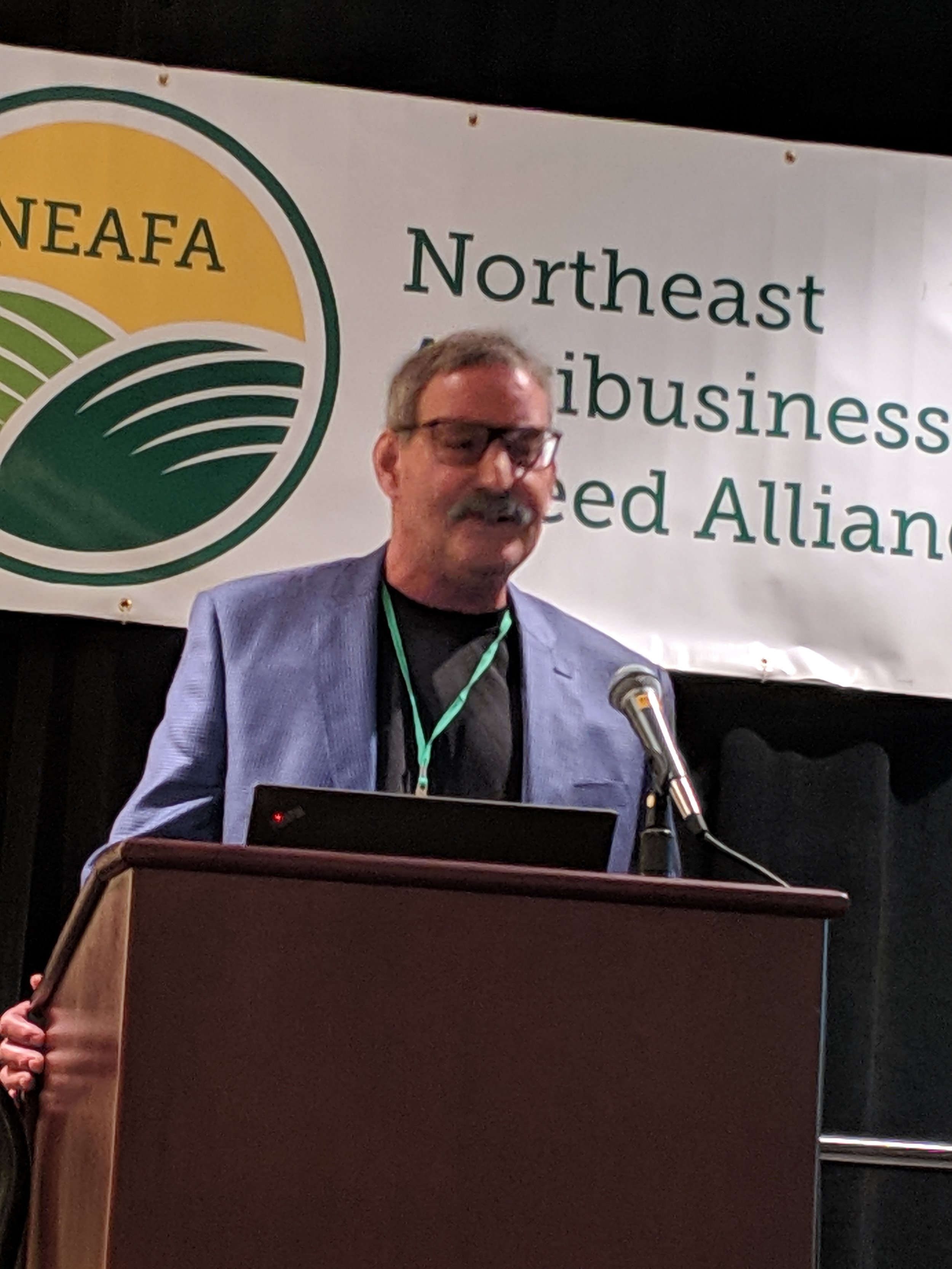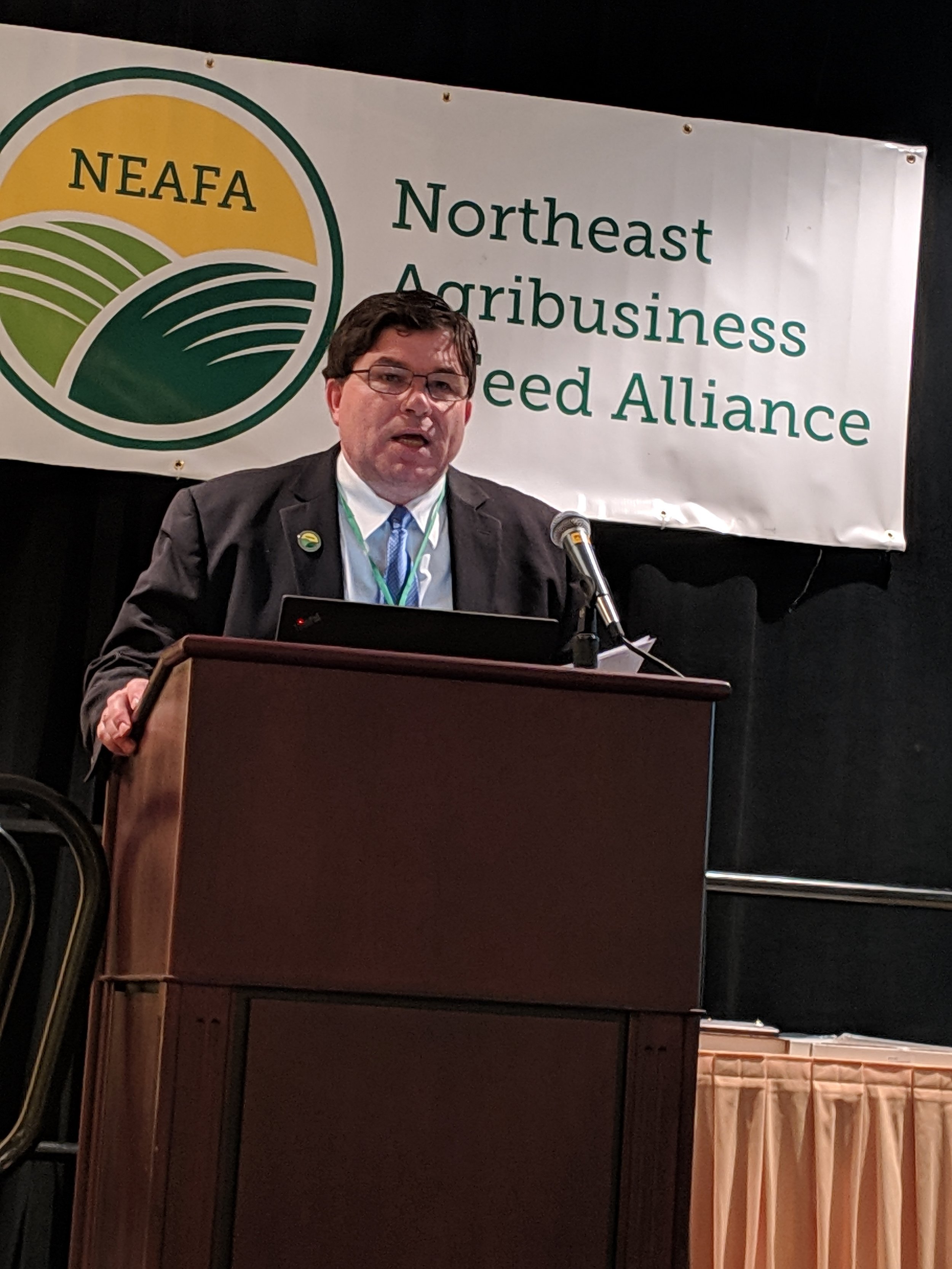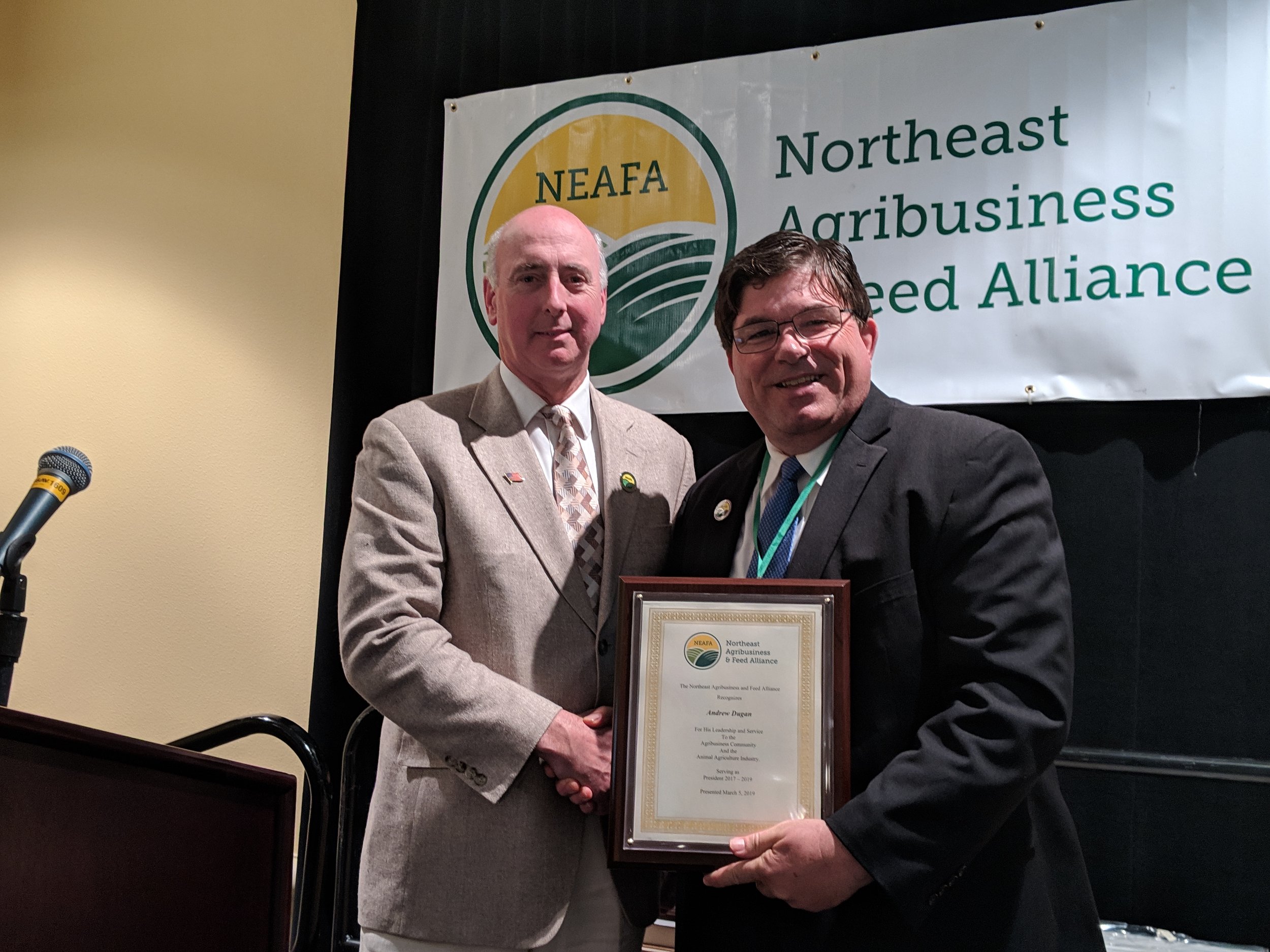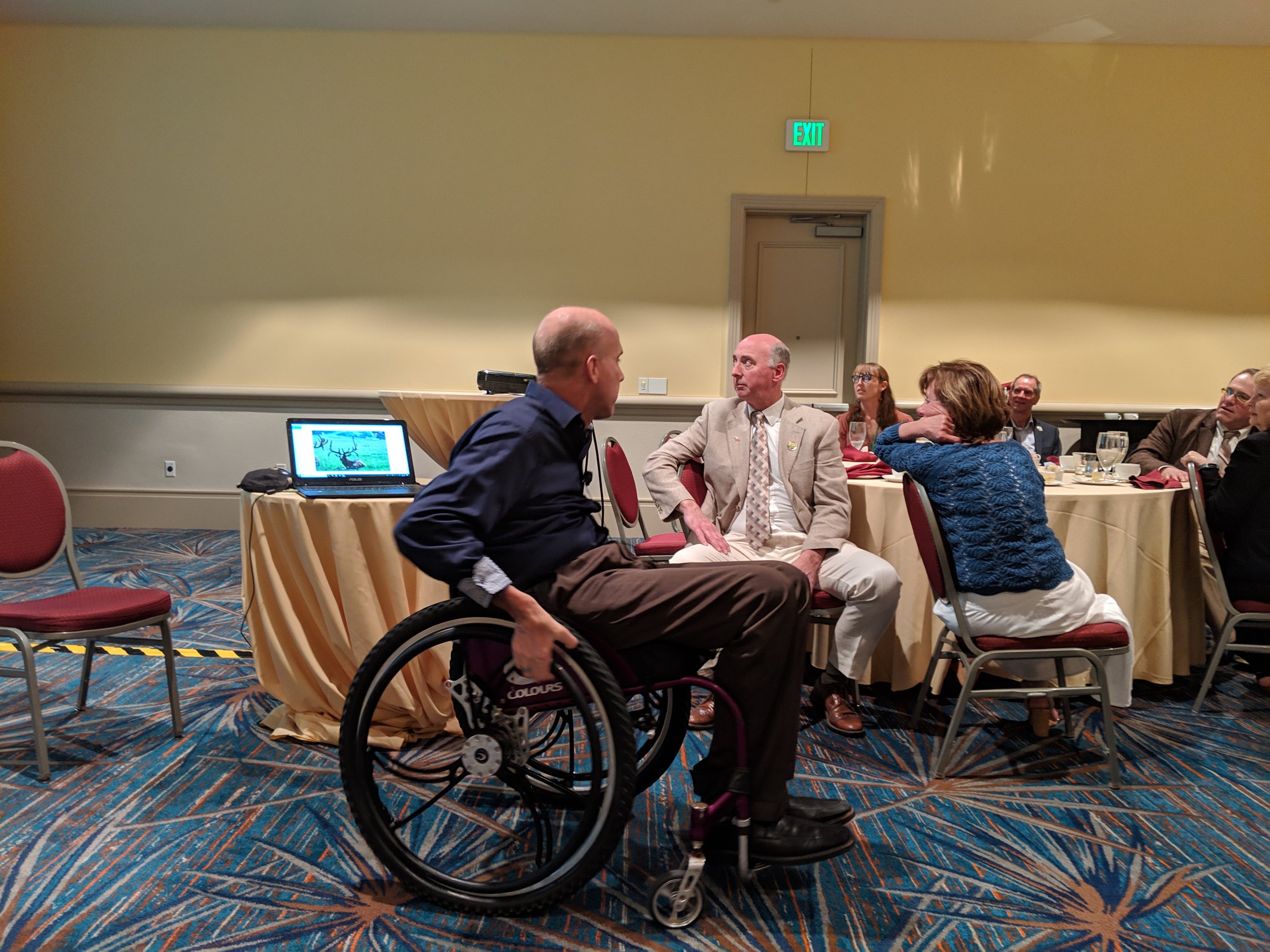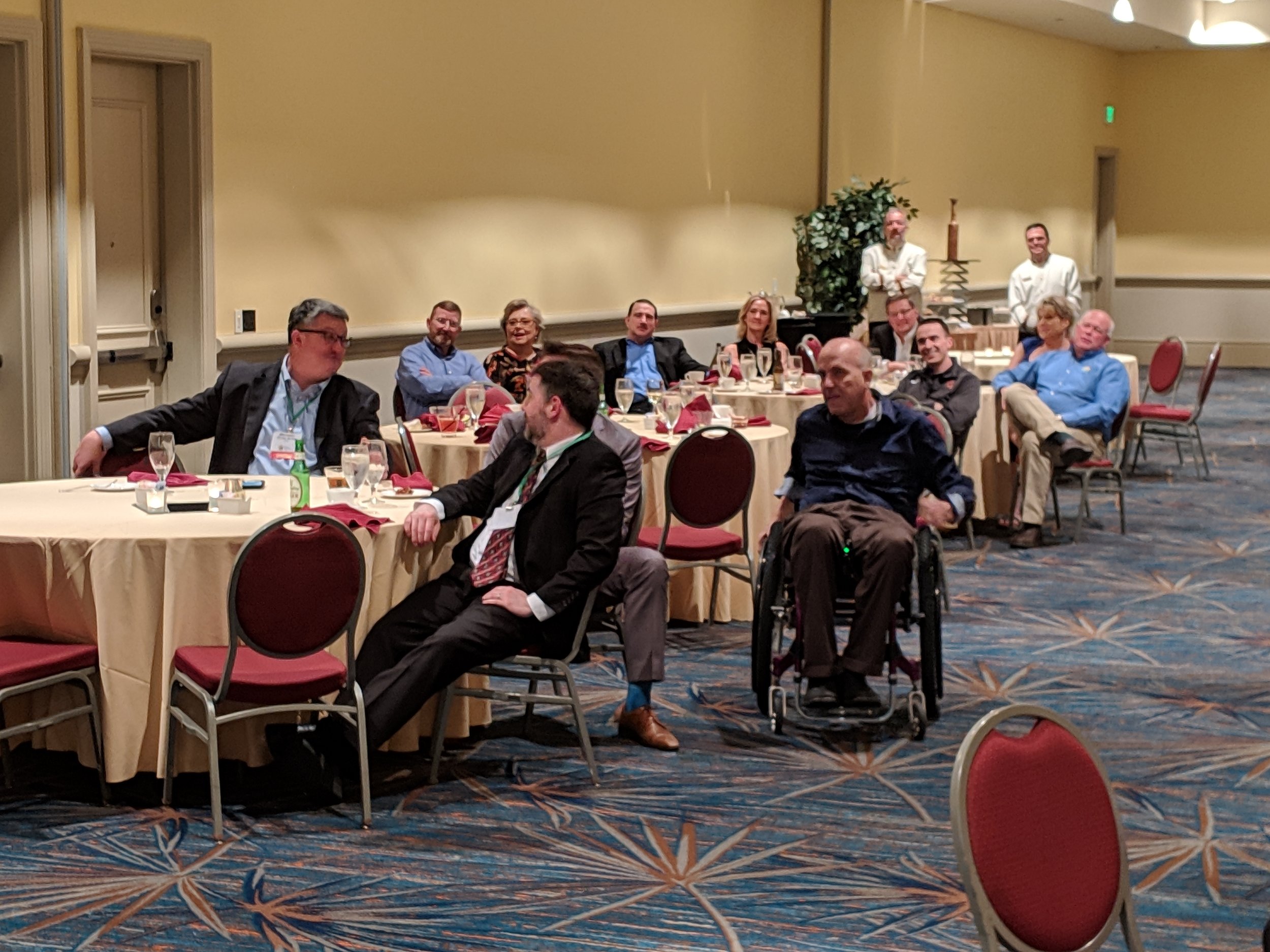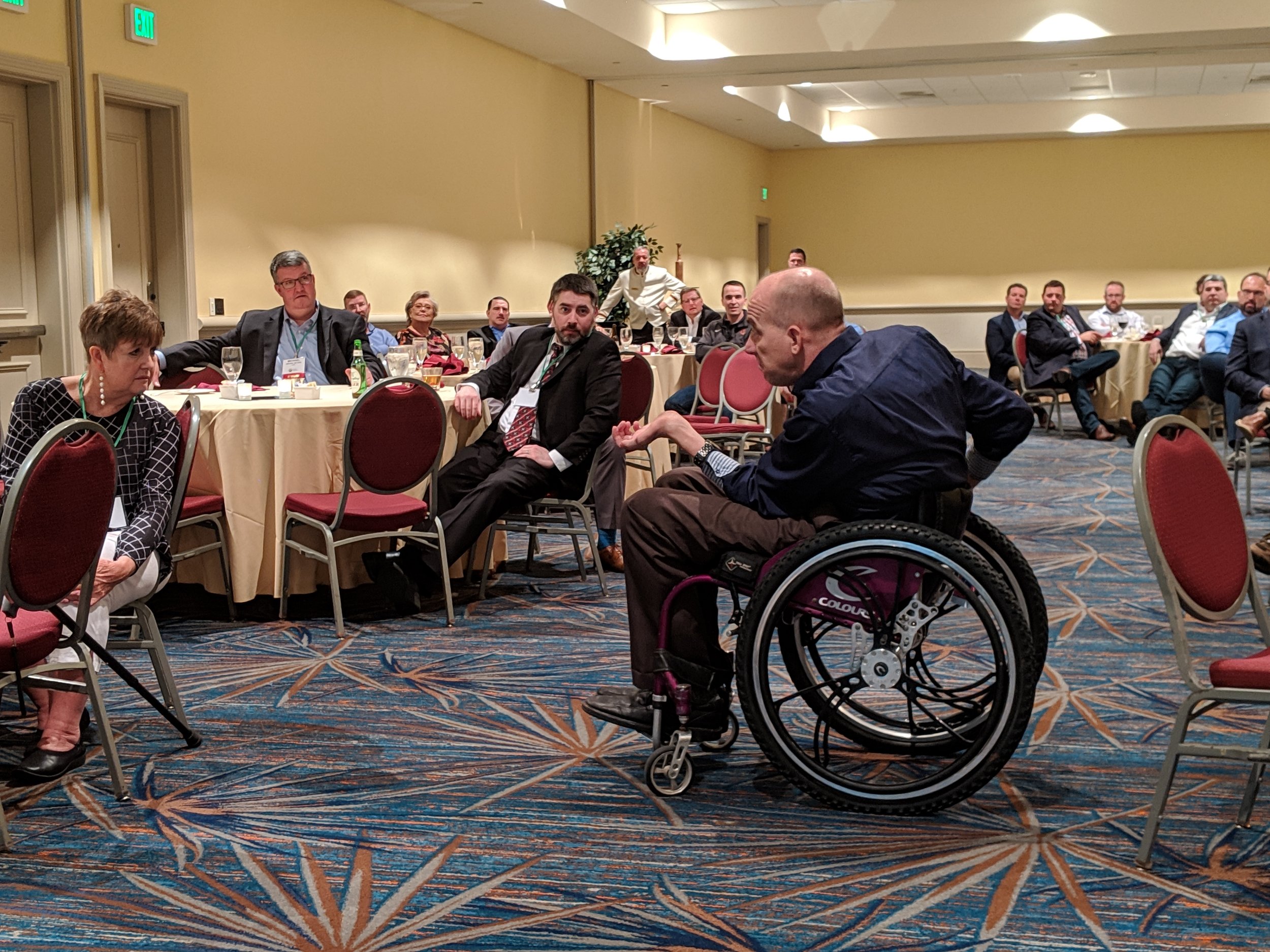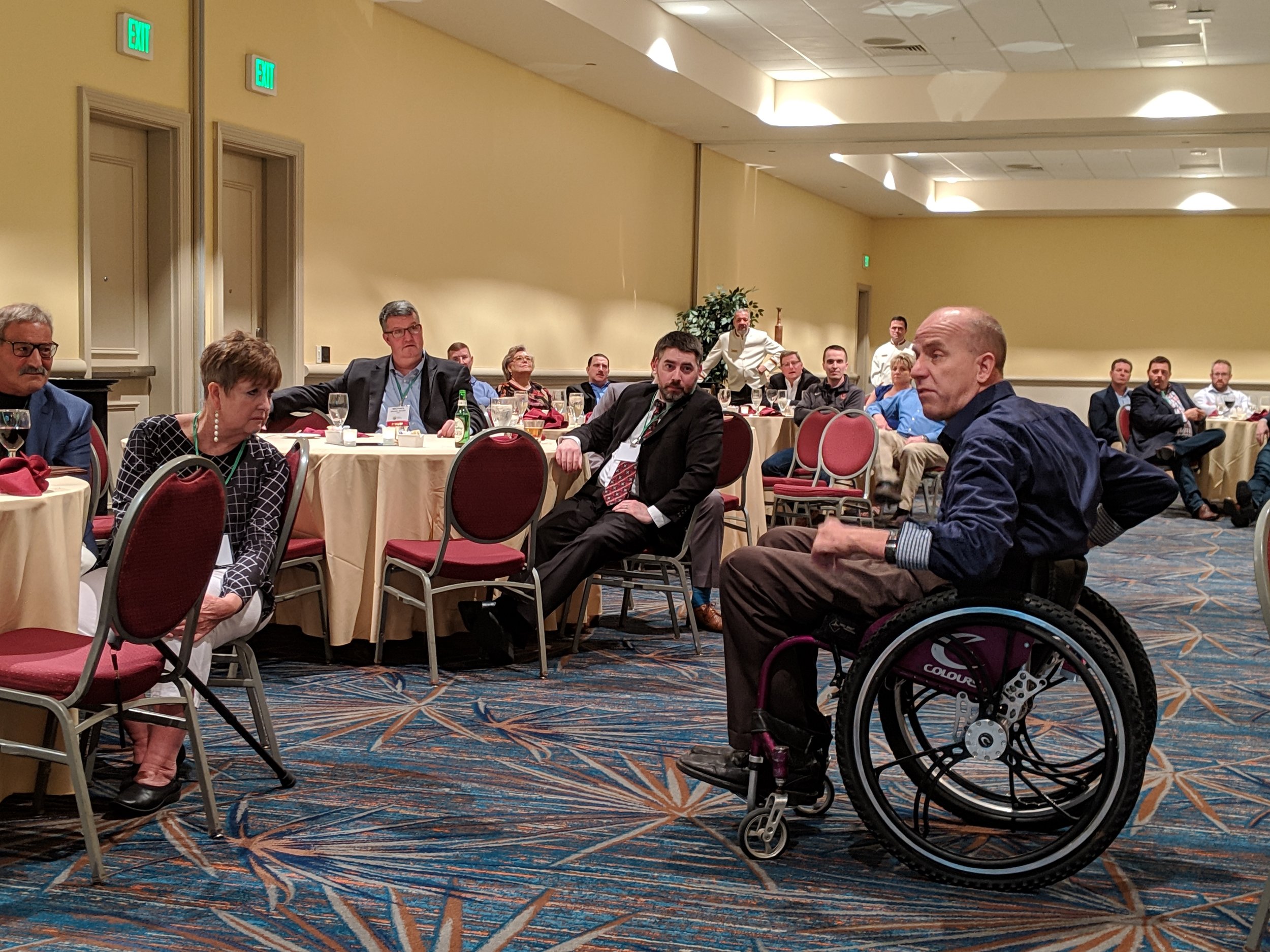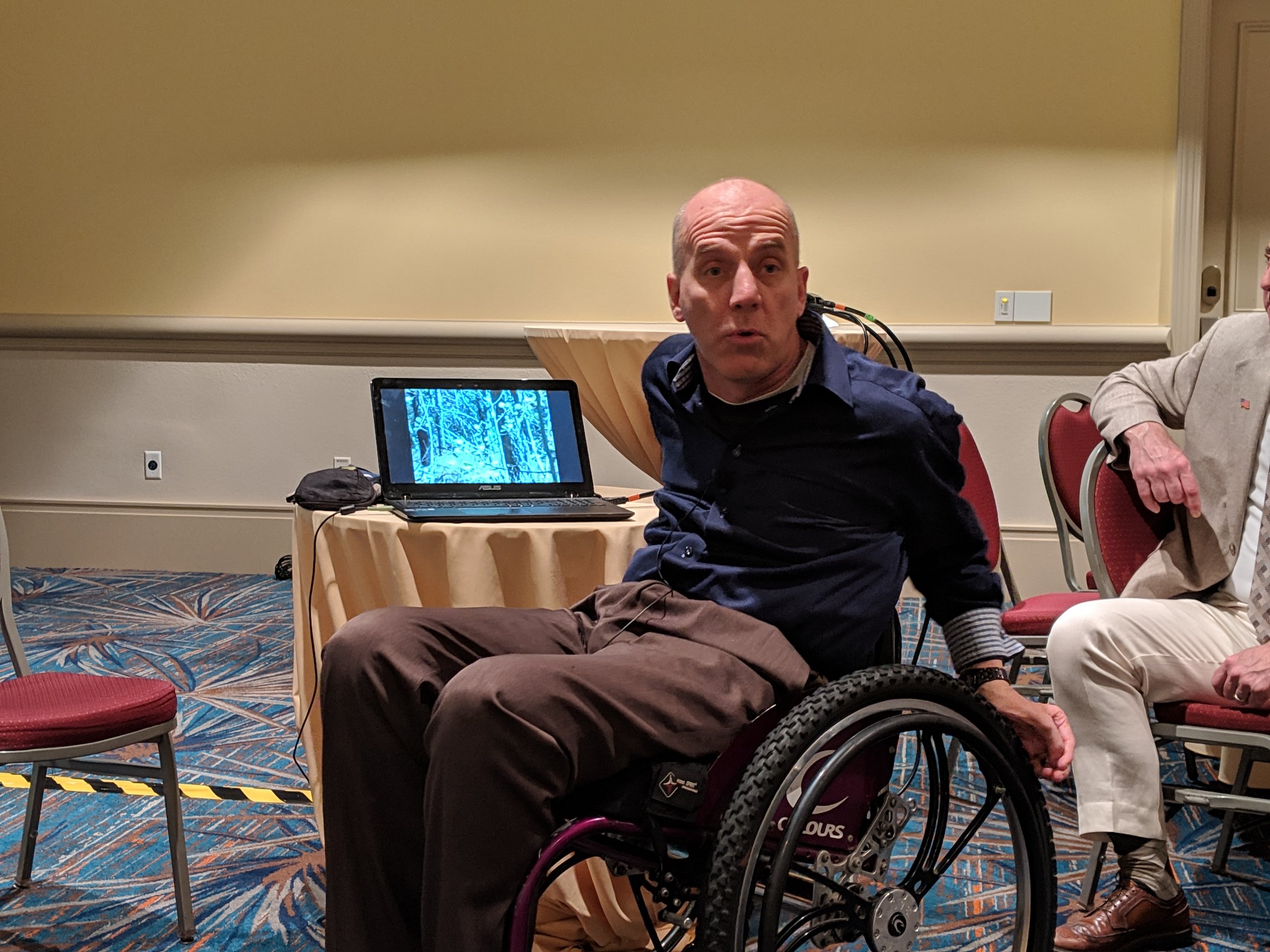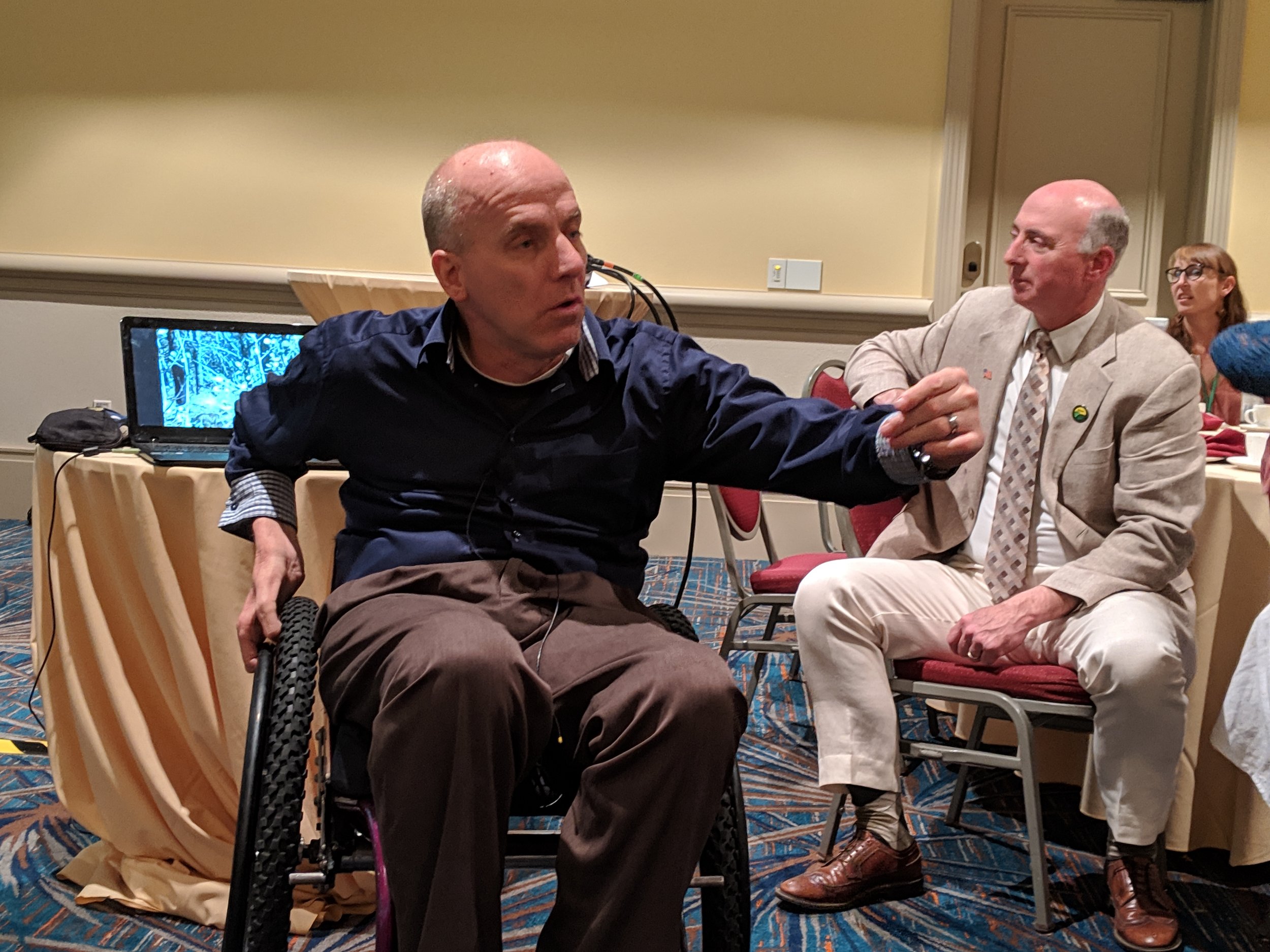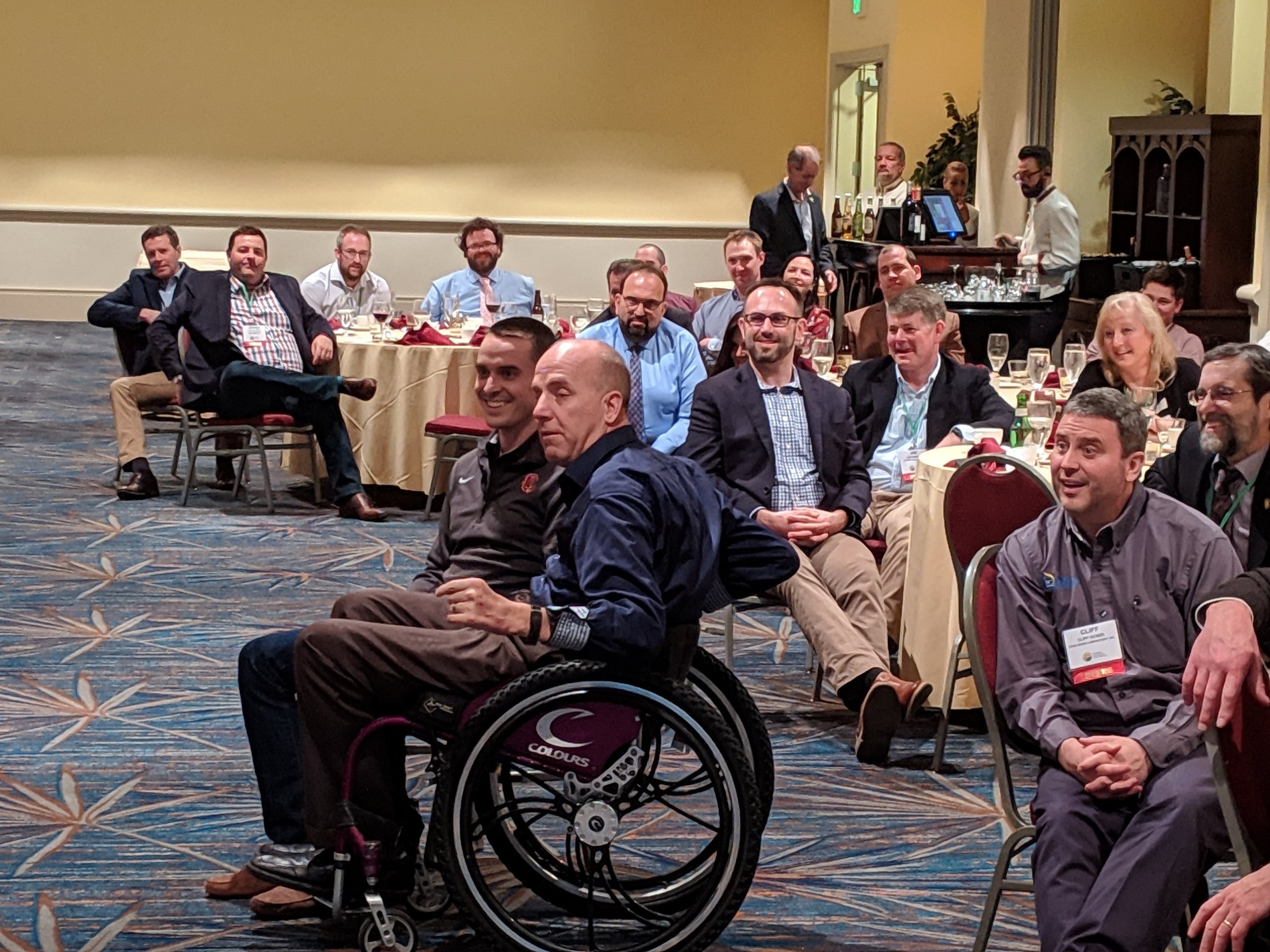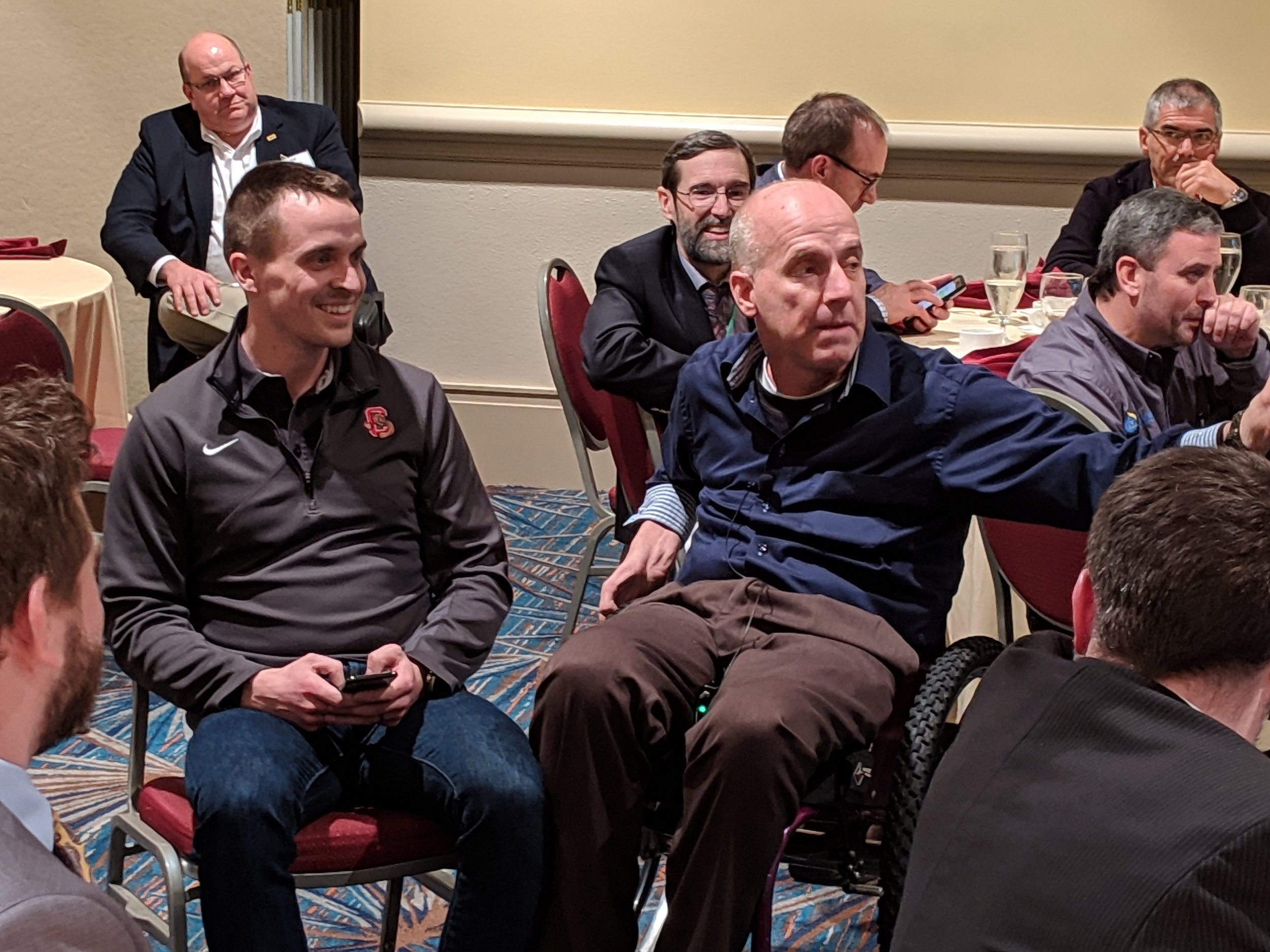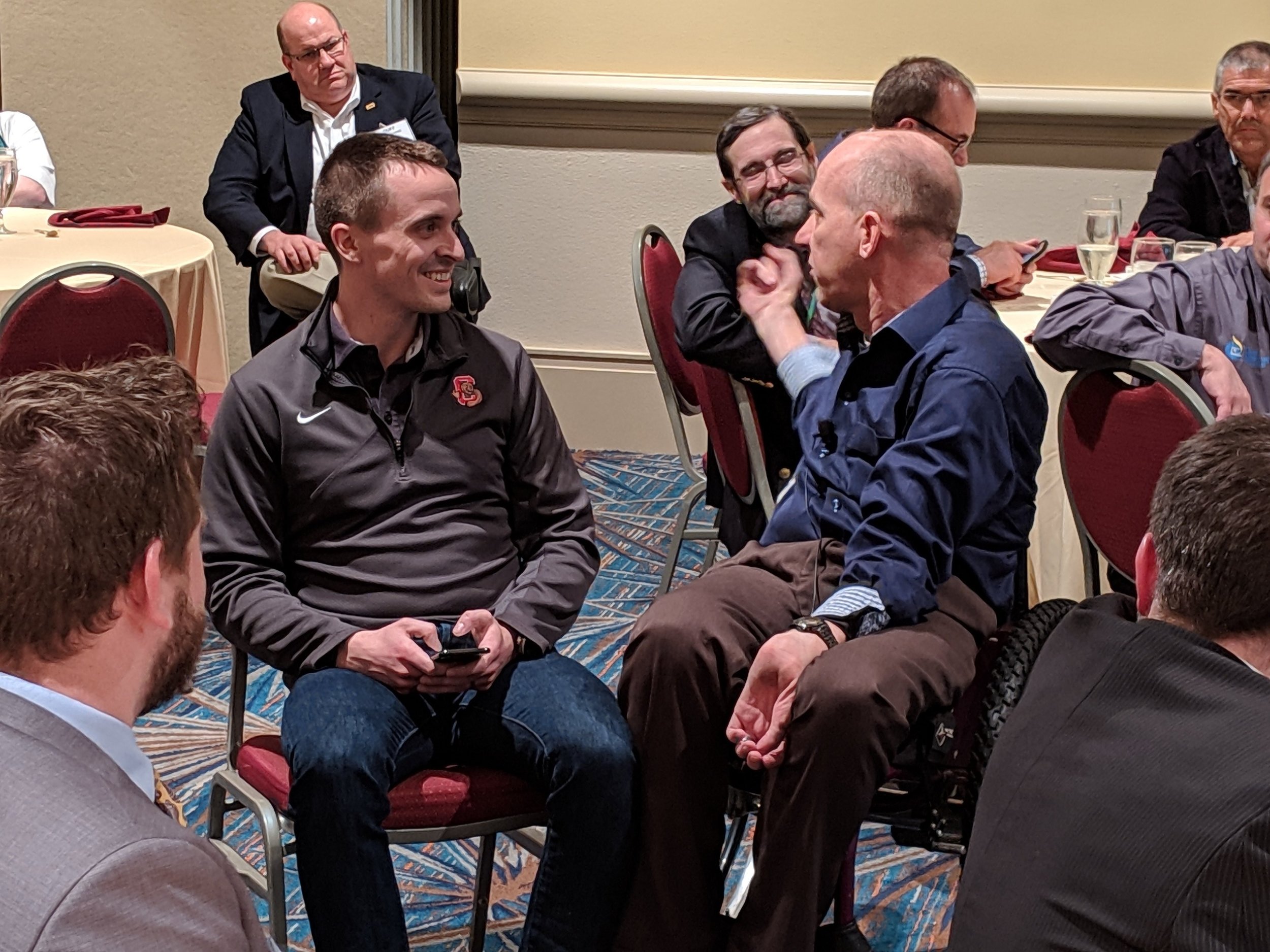By Rick Zimmerman, Executive Director
Over 300 farmers and farm workers gathered in front of the NYS Capitol to rally on the farmworker bill.
The Farmworker Fair Labor Practices Act passed the NYS Senate and Assembly on June 19th and threatens to alter the face of NY agriculture as we know it today. It is a bill that will be incredibly difficult for agriculture to absorb, but also has significant improvements compared to where we started. On January first, the bill contained a 40-hour/week and 8-hour/day overtime threshold for farmworkers and a collective bargaining provision that would allow for worker strikes. Versions of this bill have been thwarted for the past 35 years. When the NYS Senate majority flipped to the Democrats last fall, the bill had enough sponsors in both houses to pass with these crippling provisions. But agriculture would not let that happen.
Agricultural organizations, including NEAFA, farmers, and farmworkers came together like never before to pool resources, organize outreach, and develop an effective public affairs strategy that ultimately moved the needle. It was the largest legislative undertaking that many can remember for the New York farm community. Weekly, if not daily conversations to strategize and coordinate were held by the group for the past six months.
In the end, revised legislation passed overwhelmingly in both houses. The bill includes a 60-hour overtime threshold, collective bargaining with an anti-strike clause, and farms will no longer have to pay unemployment insurance on H2A employees. A simple “hell no, we won’t go” opposition would not have been effective in achieving these significant improvements. Political realities meant we had to attempt to find middle ground with lawmakers who were philosophically against us, and we were on track to accomplish all our goals. Unfortunately, last minute additions, outside the negotiated agreement, negated much of the gains achieved, thus leading the coalition to oppose the bill.
The last-minute provisions that lead to opposing the bill include:
Mandatory overtime on a “day of rest” if a farm worker chooses to work.
Narrow farm family definition that will subject extended family members (cousins, nephews, etc.) to the farmworker provisions
Requirement of a wage board to study and consider lowering the overtime threshold from 60 hours.
Collective bargaining provisions that favor labor unions at the expense of fairness to farm workers.
Organized under the banner of “Grow NY Farms,” the coalition of farm organizations will continue to work to fix the above listed flaws to achieve a more balanced outcome. Governor Cuomo has yet to sign the bill and we will continue to promote amendments now and into the new year.
You may be unaware of what went on publicly and behind the scenes to work on this legislation. Here is a brief timeline of where things started:
Meetings with both newly elected and incumbent Senators and Assembly Members started in home districts in the immediate days following the November 2018 elections, when democrats assumed large majorities in both chambers.
New York agriculture leaders gathered in Syracuse last December to assess the situation and strategize a path forward to address the political realities.
NEAFA’s February Lobby Day prioritized this issue and unveiled the powerful Farm Credit East Report on the financial impact of overtime.
The agriculture community pushed for hearings on the bill because we felt strongly that legislators must first hear from farmers and farm workers.
John Clark and Lon Stephens presented testimony, on behalf of NEAFA and the agribusiness community, at one of three hearings scheduled by the Senate Labor Committee.
Countless meetings continued in Albany and district offices during winter and spring months.
Two regional press conferences, featuring farmers in central and western NY, to share their stories and coordinated additional regional press coverage in advance of the legislative hearings and roundtables.
Senator Mike Ranzenhofer hosted a farmer forum for Senator Ramos (sponsor of the farmworker bill) where more than two dozen progressive farmers and farm workers articulated their concerns to the Senator. Following this forum senator Ramos met with over two hundred farmers and farm workers at Torrey Farms where they talked to her directly about their desire to work as many hours as they can get.
The “Grow NY Farms” coalition (www.GrowNYFarms.com) was formed from leading NY farm organizations with resources devoted to both the lobbying on the bill and to promote farmer image. NEAFA was a charter member of Grow NY Farms
Signs were dispersed across the state encouraging farmers to share positive messaging about their role in the economy and need to grow New York agriculture.
We coordinated with county legislatures and boards of supervisors to get more than 15 municipal resolutions denouncing the farm labor bill that were then forwarded to the legislature in Albany.
A large rally in Albany, featuring more than 300 farmers and farmworkers, was timed to coincide with the final weeks of session to express that agriculture was a part of the solution. It was important for all sides to work together to find common ground on a bill that would do the least harm possible to agriculture. The rally included six busloads of participants, t-shirts, signs and banners were passed out to participants. Farmer Tim Stanton and his family drove three tractors and a hay wagon to circle the Capitol as four Albany TV stations covered the event live on their morning and noon programs.
Farmer Tim Stanton and family drove tractors and hay wagon to the NYS Capitol to deliver a message to lawmakers.
Negotiations at the highest levels of state government, including with the Senate Majority Leader, Assembly Speaker and officials in the Governor’s office, continued for days in the final weeks of session.
As what looked to be a somewhat workable compromise fell apart on the last day of the legislative session, the coalition quickly mobilized to oppose the bill and to attempt to make additional changes to the bill. We were successful in conducting several news interviews during the debate that reengaged the Governor’s office in the conversation.
Efforts to modify the bill, will continue.
Thank you to everyone who spoke out, attended a hearing, hosted a tour, spoke to media, attended the rally, came to Albany or made a phone call. This is grassroots advocacy at its best.
















